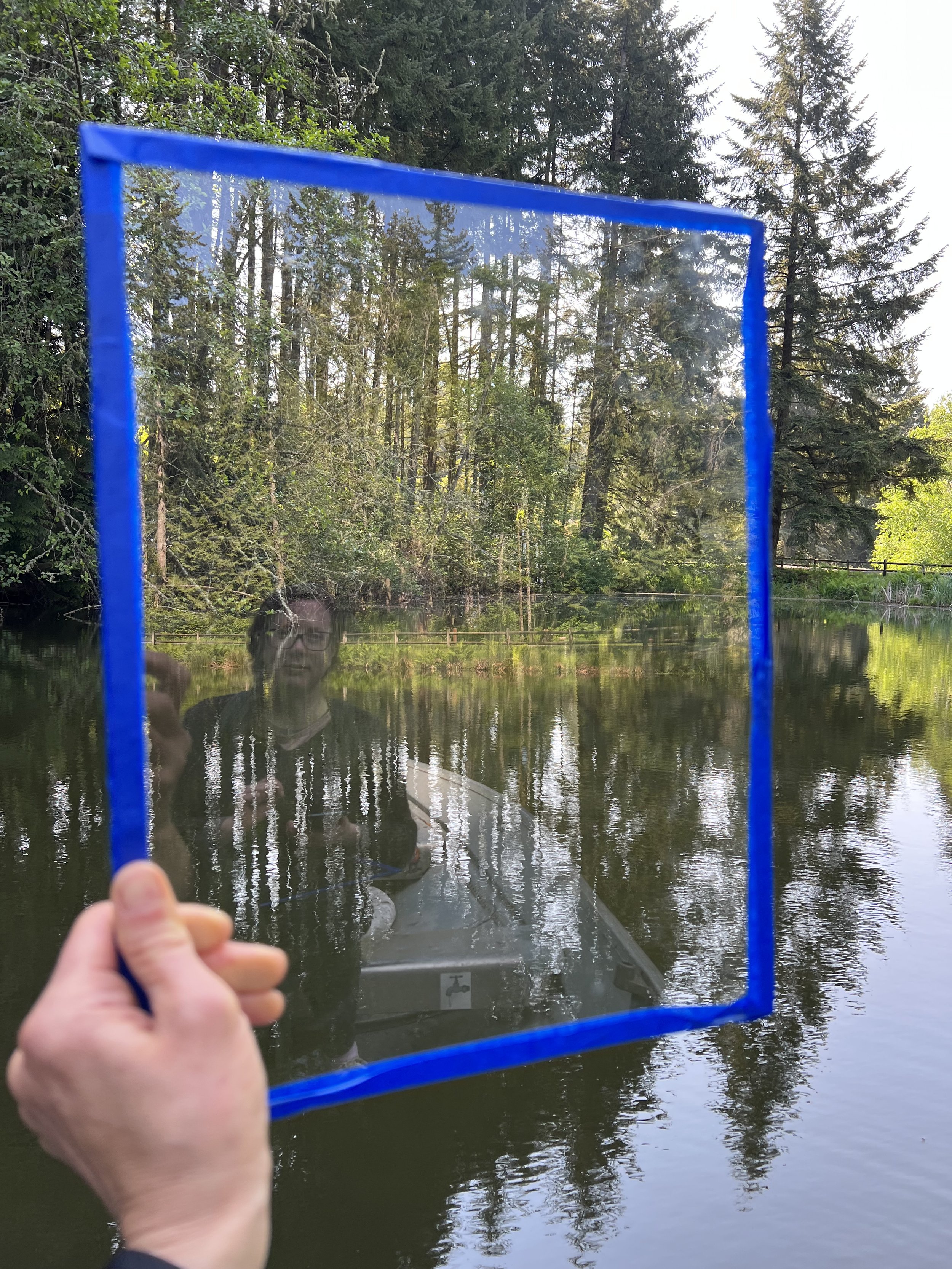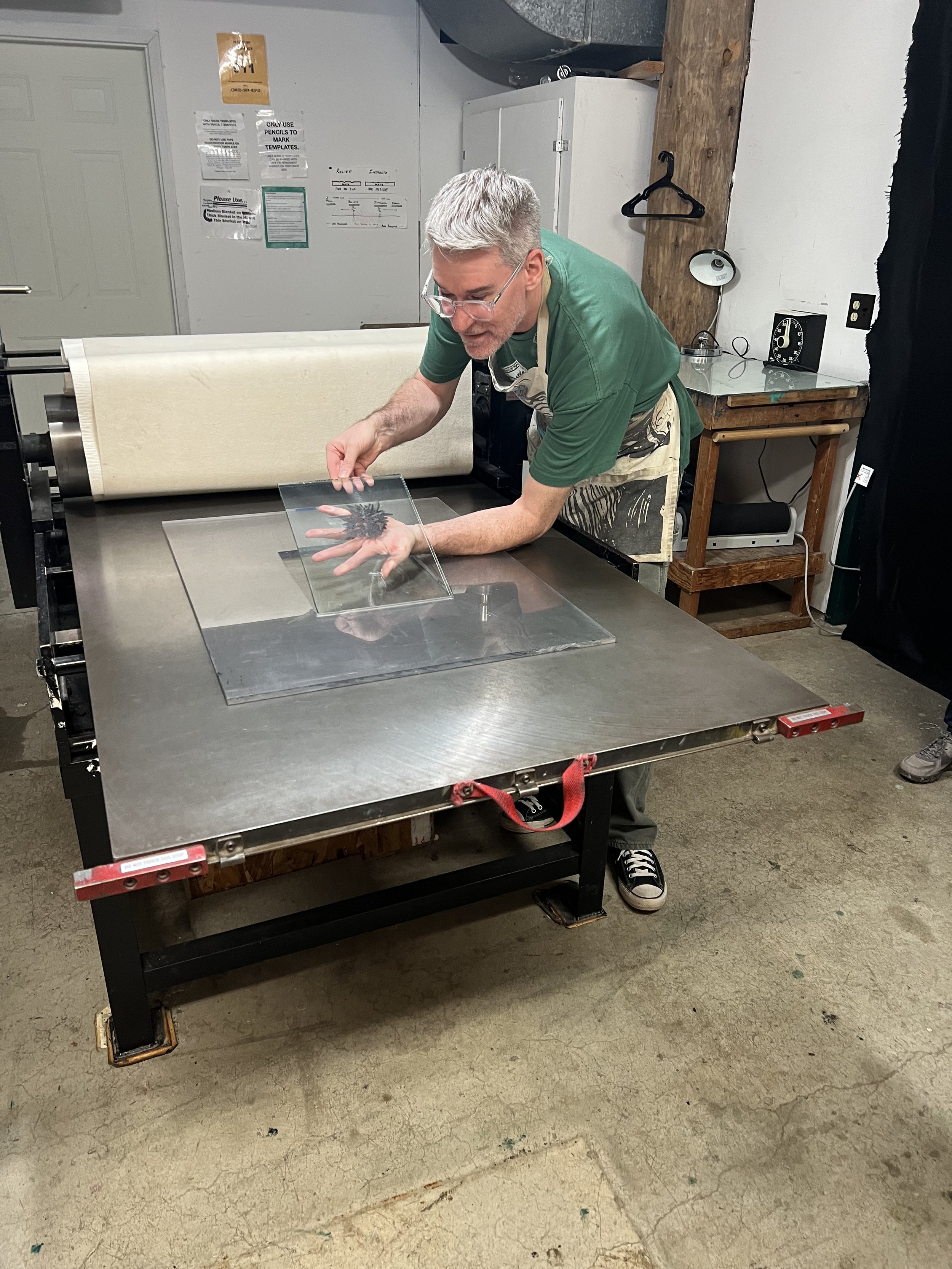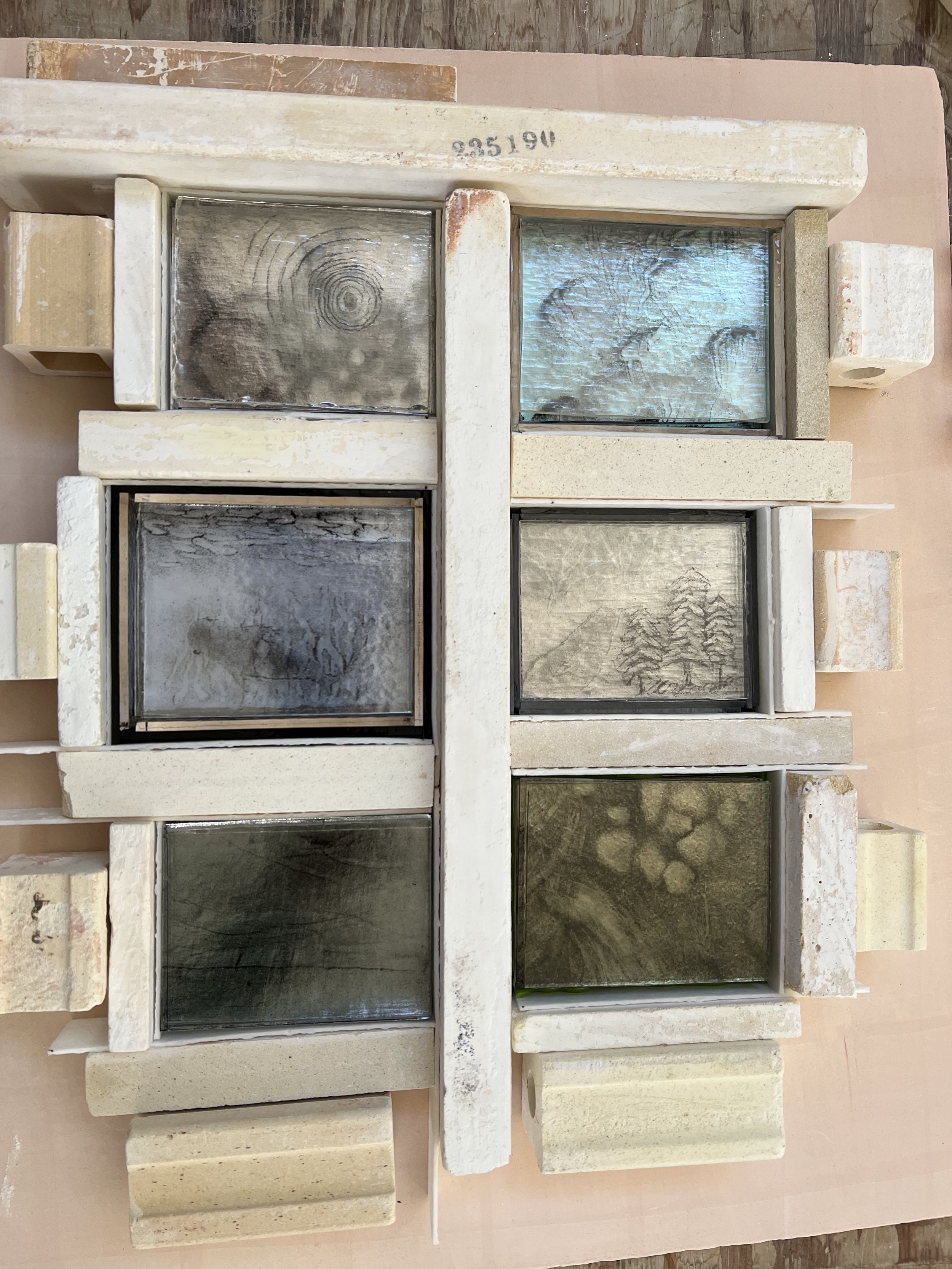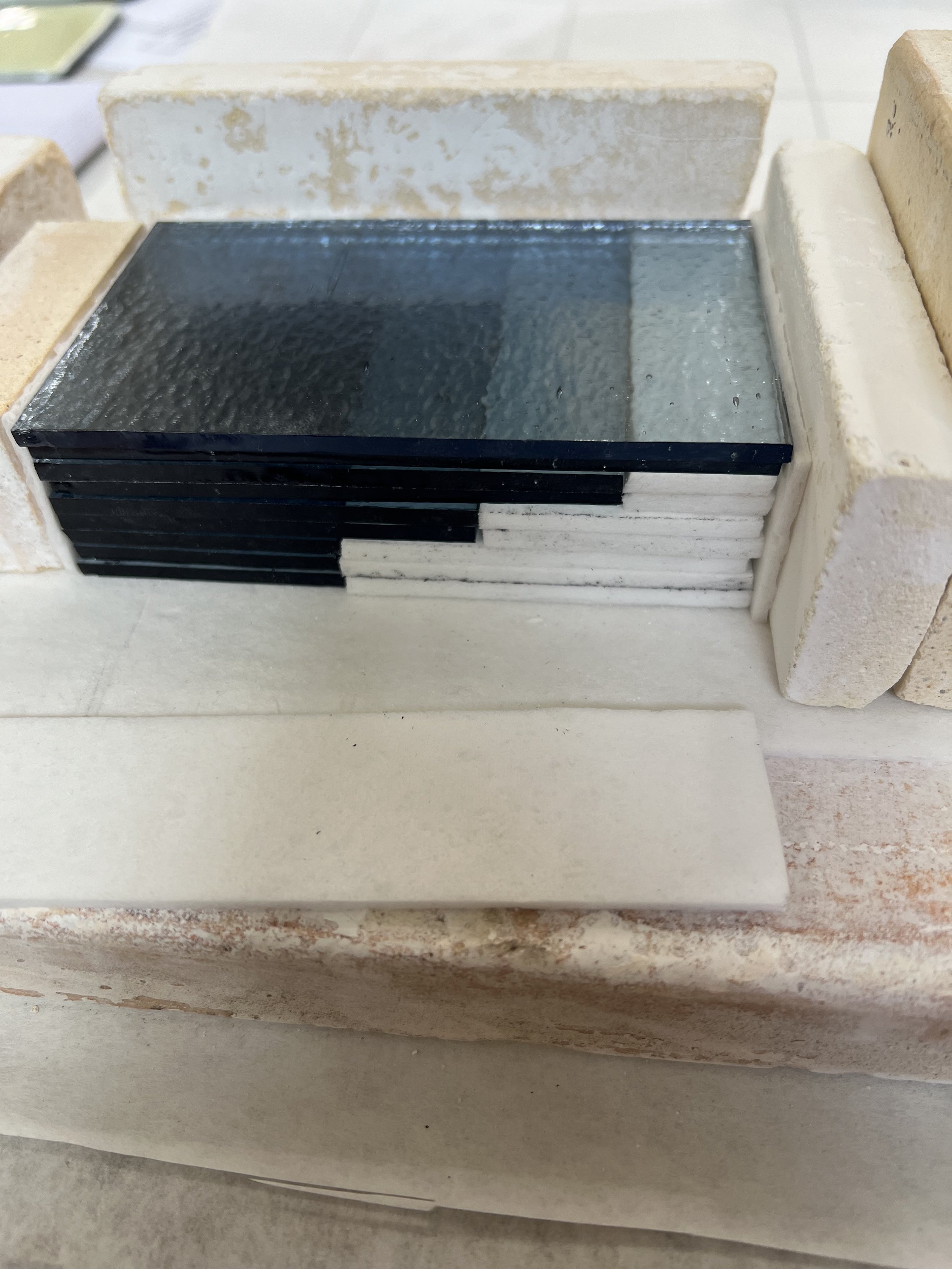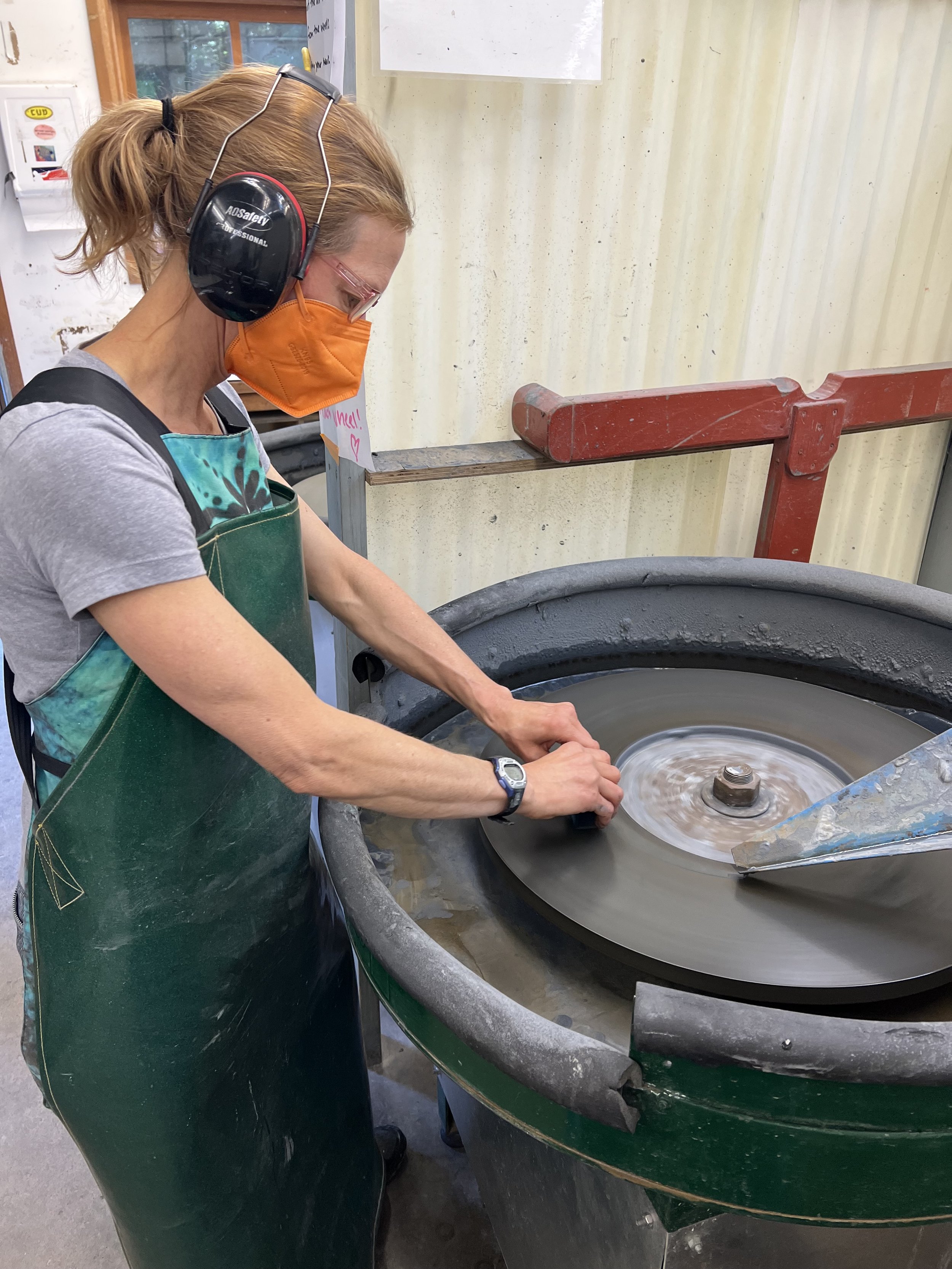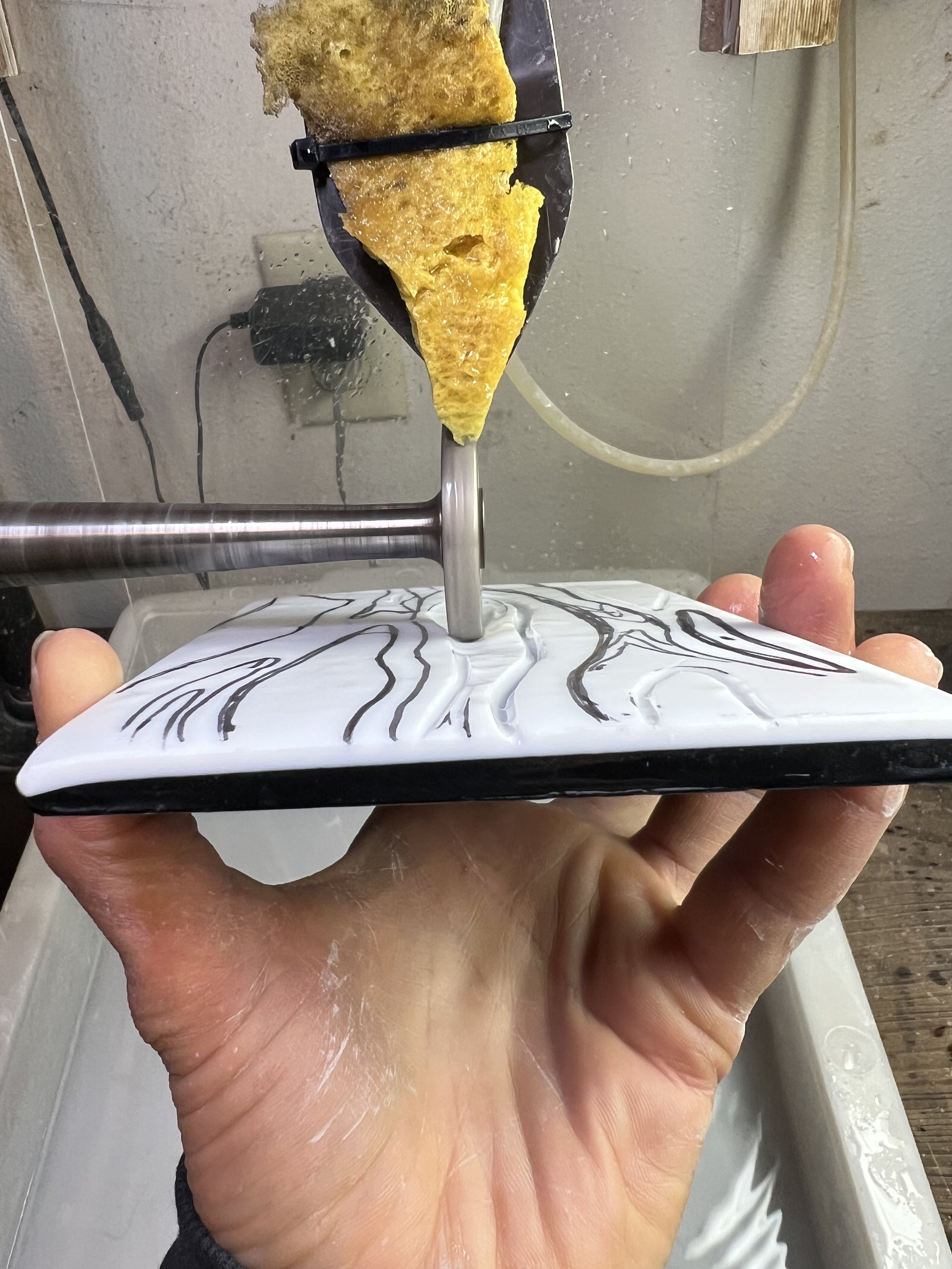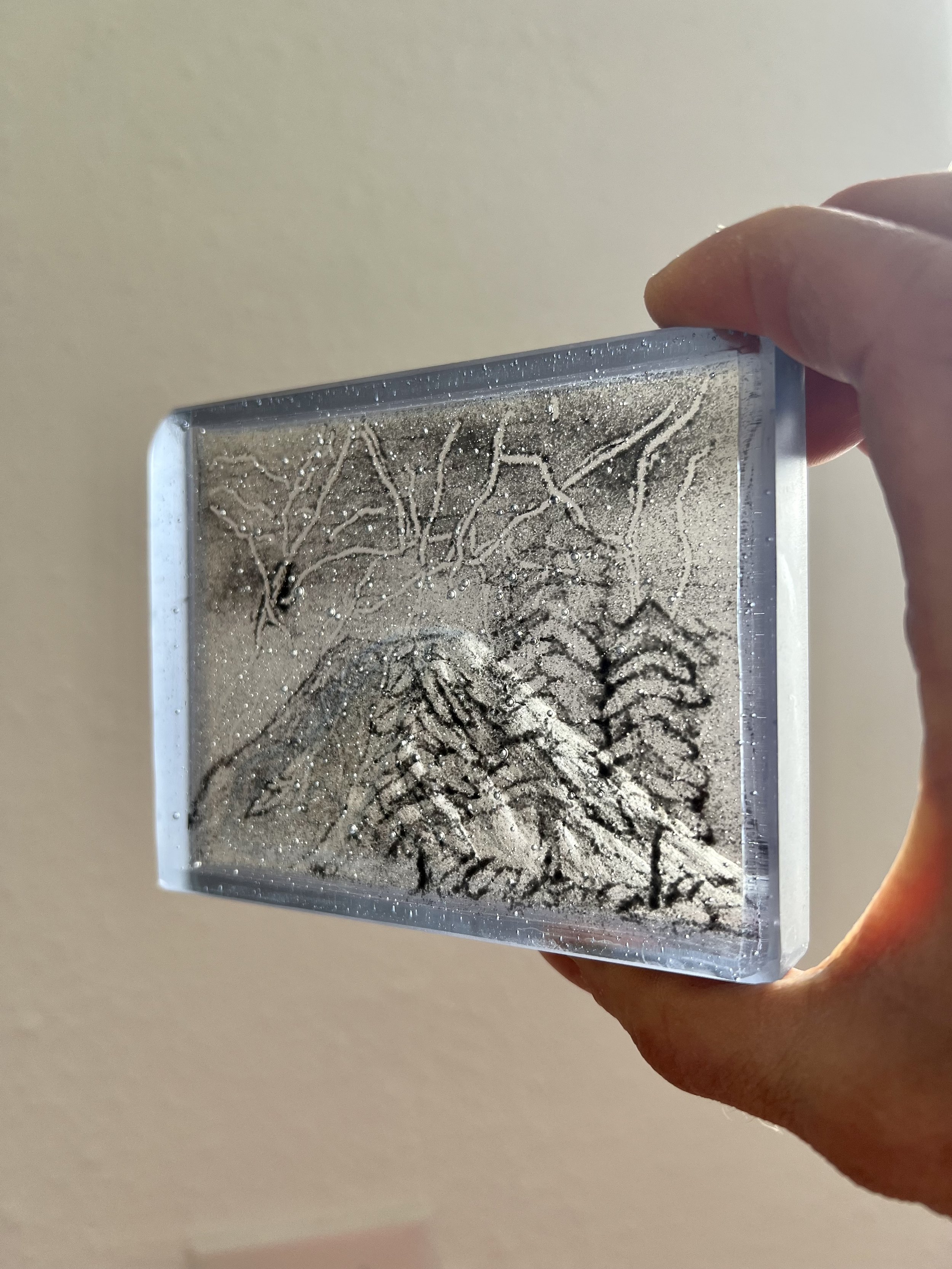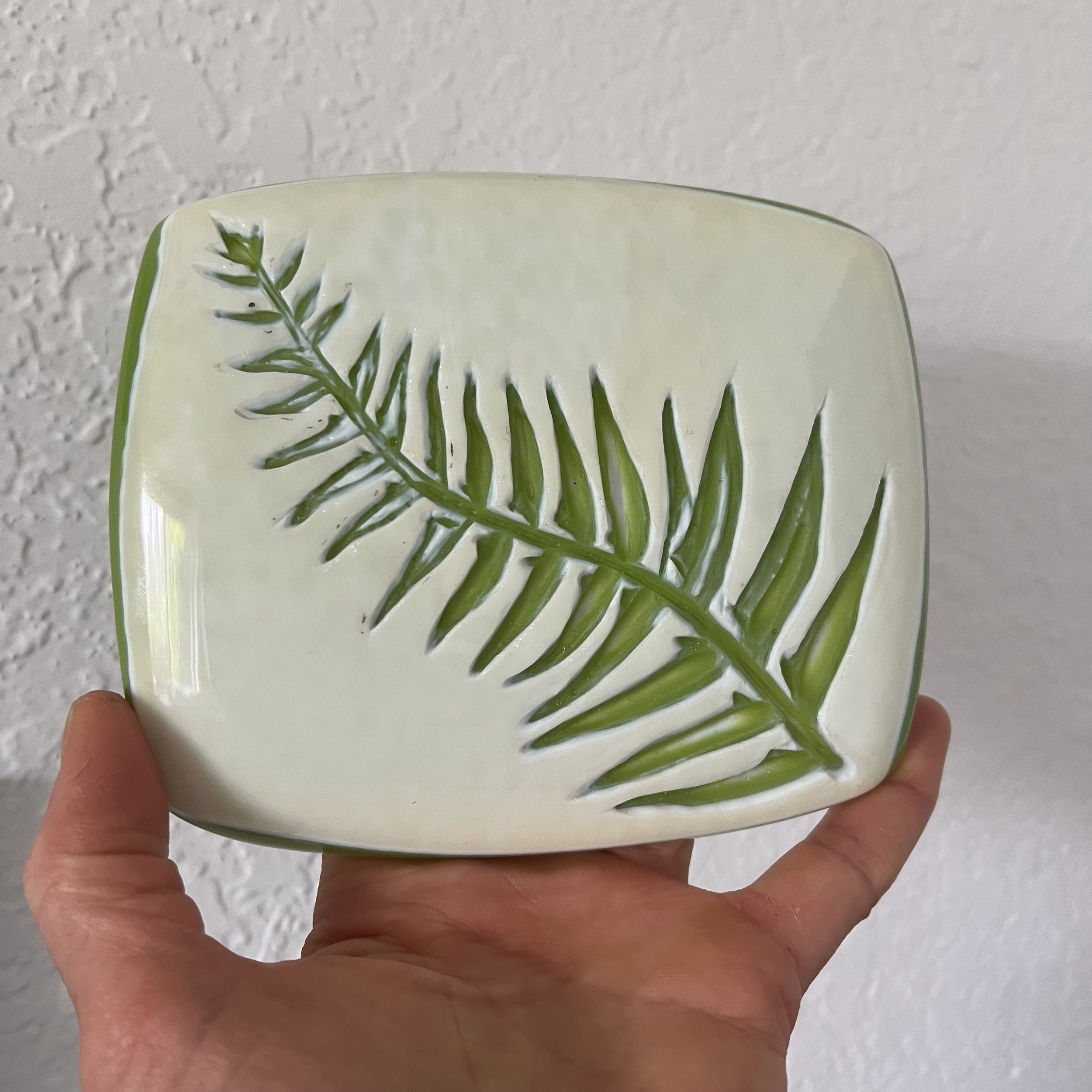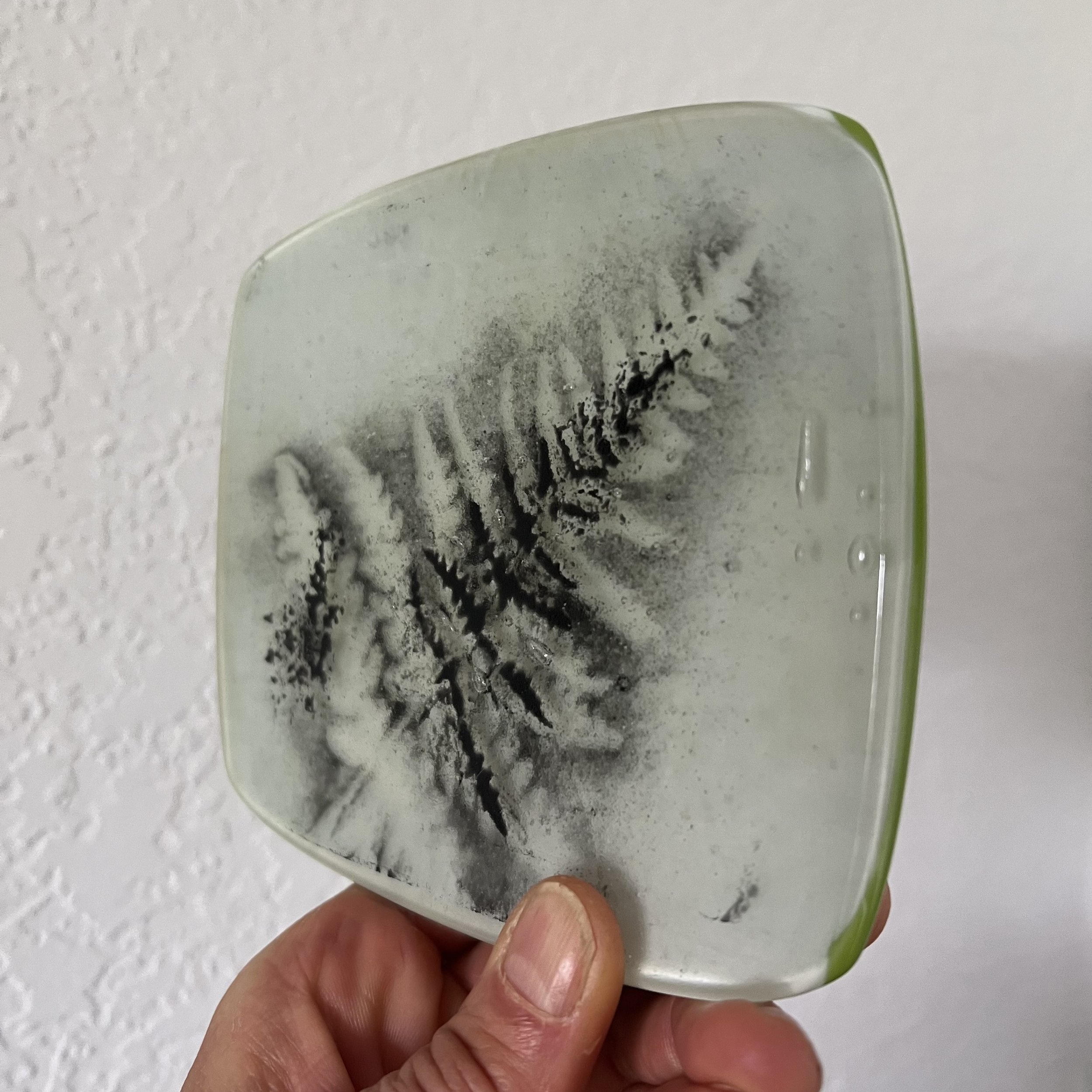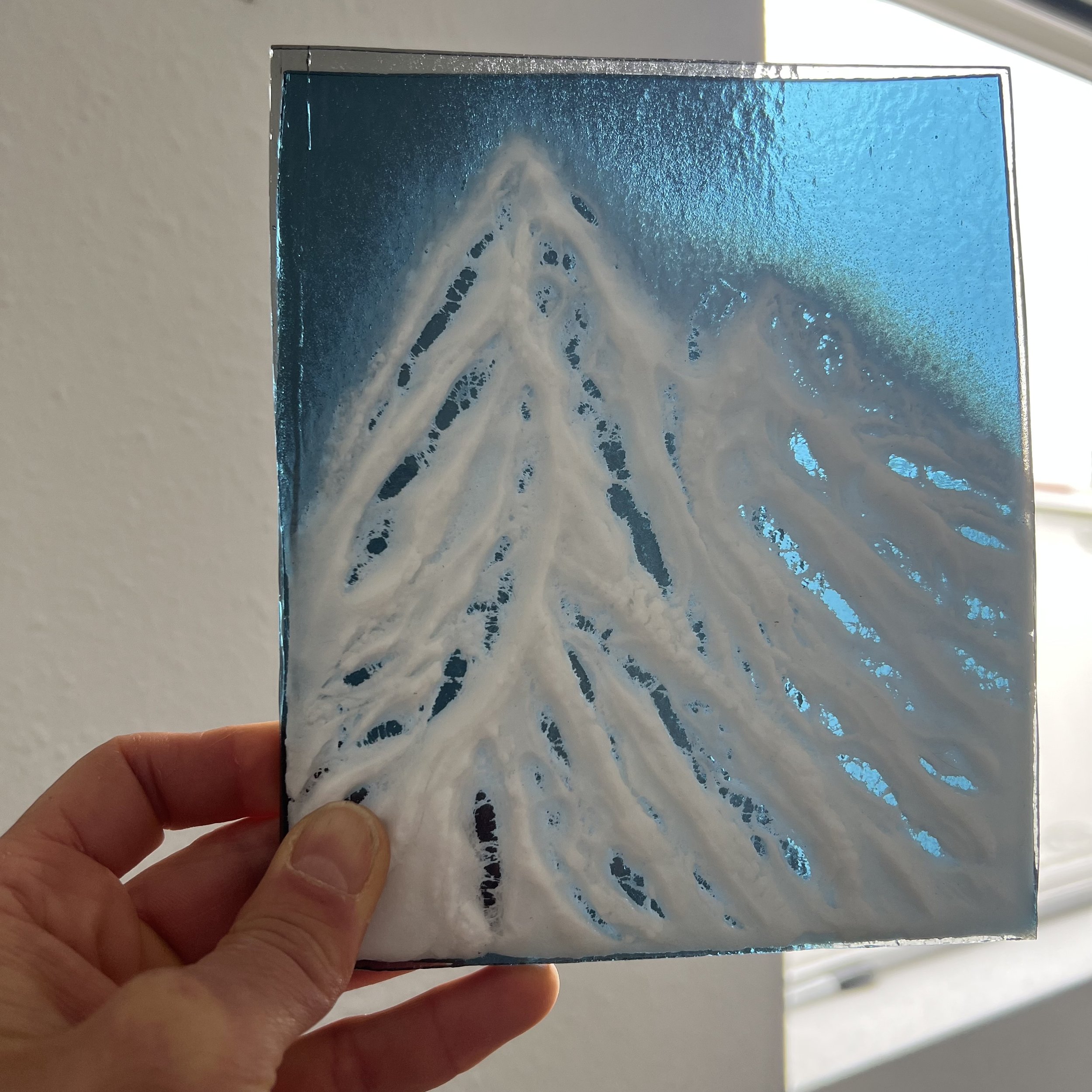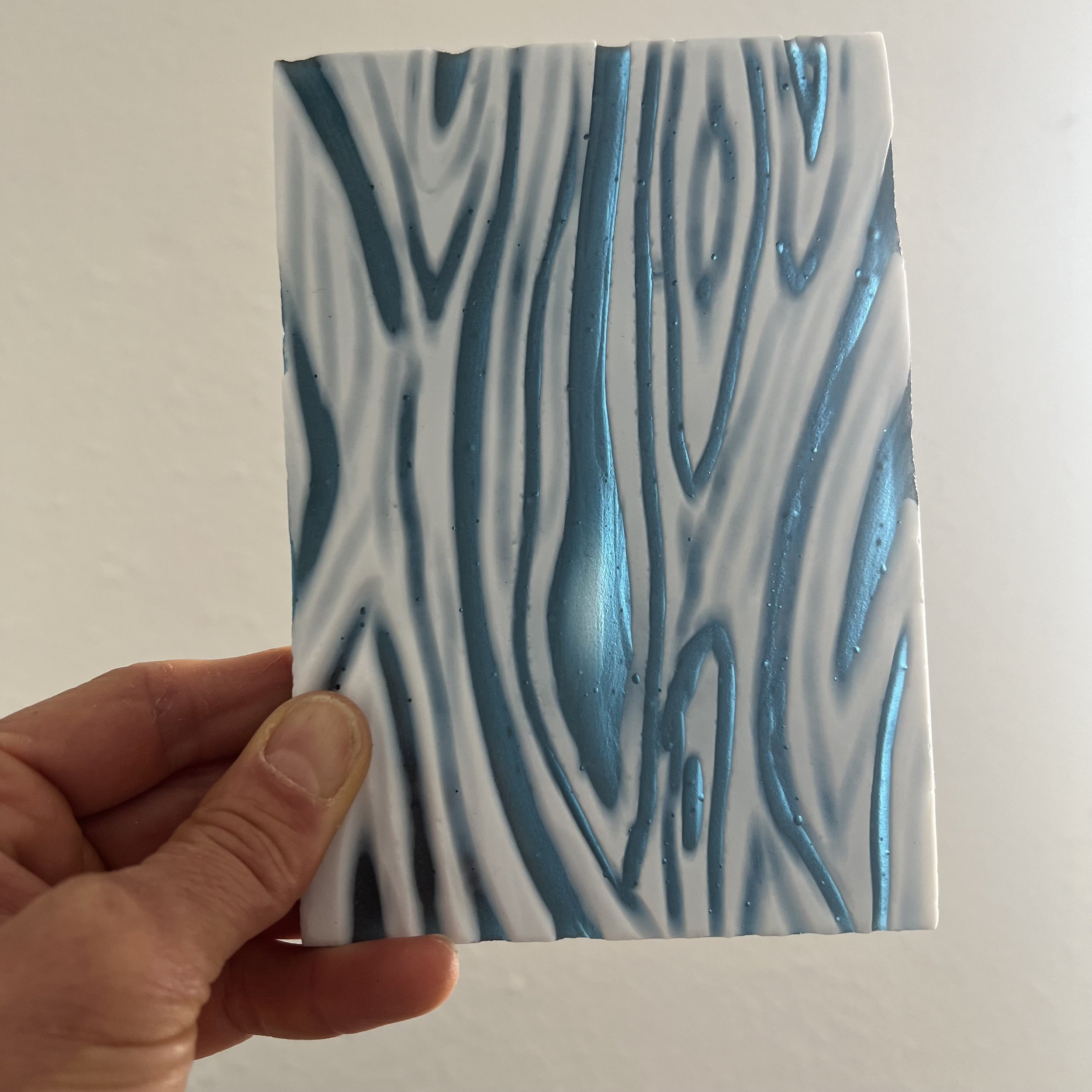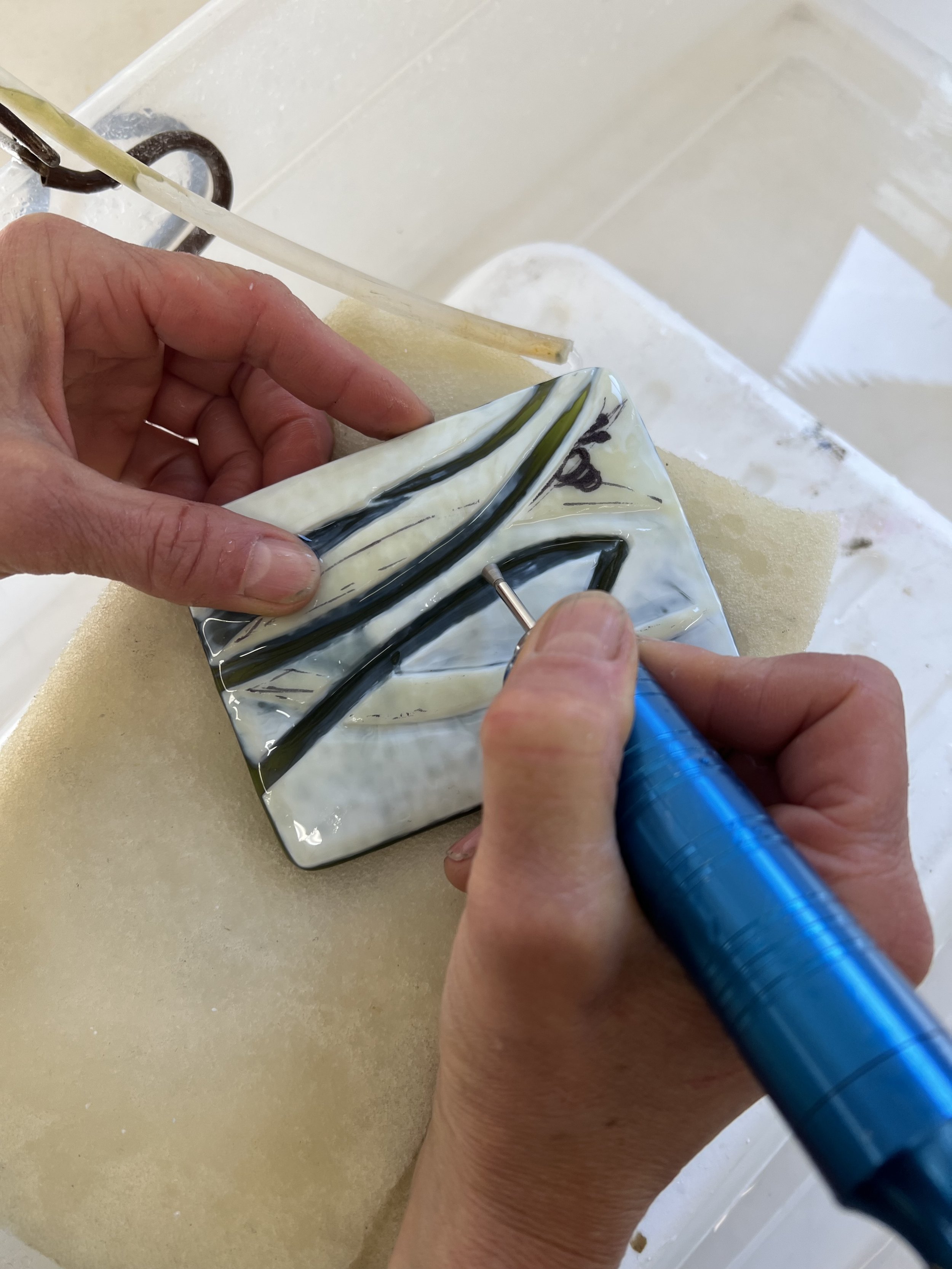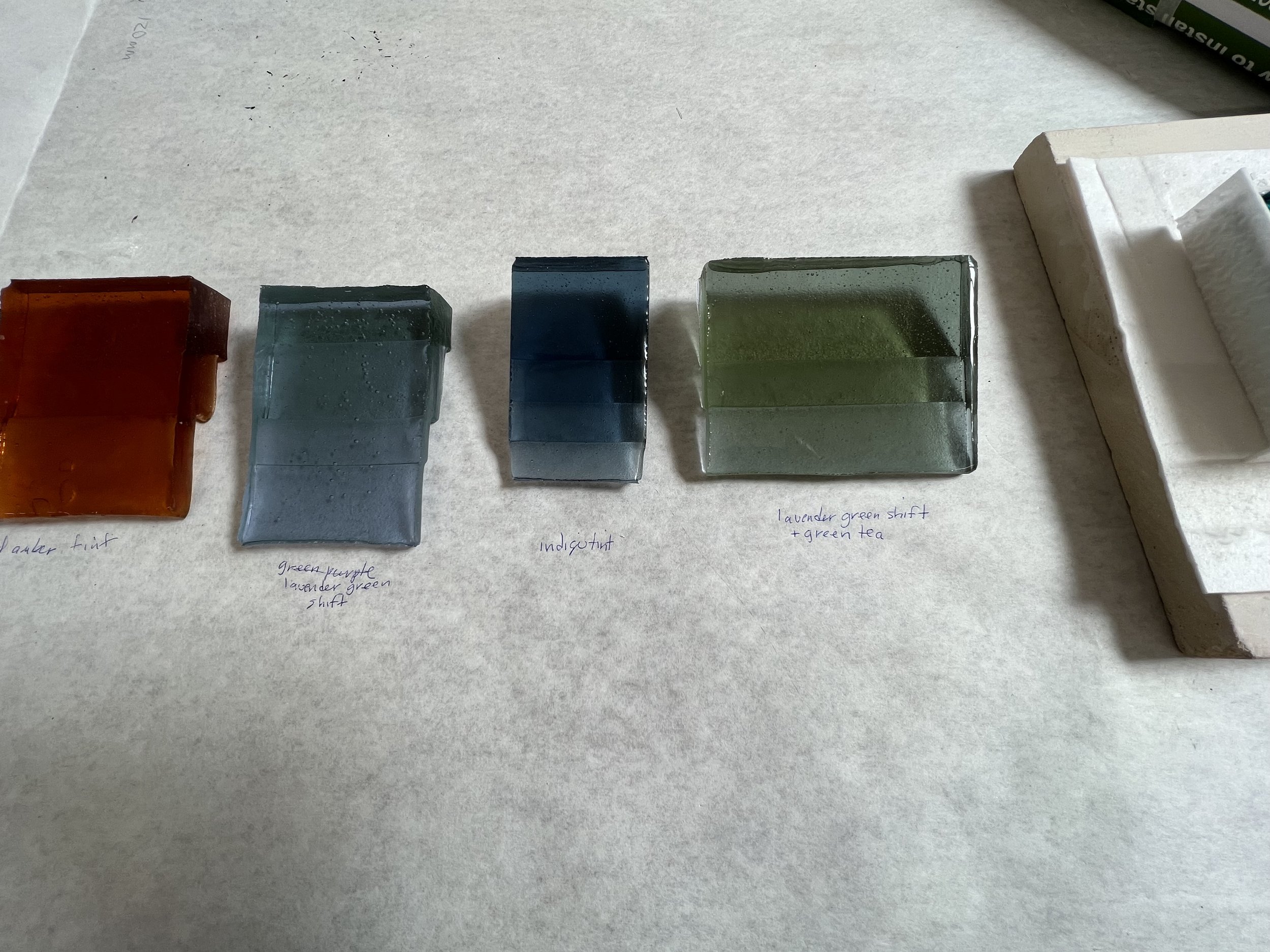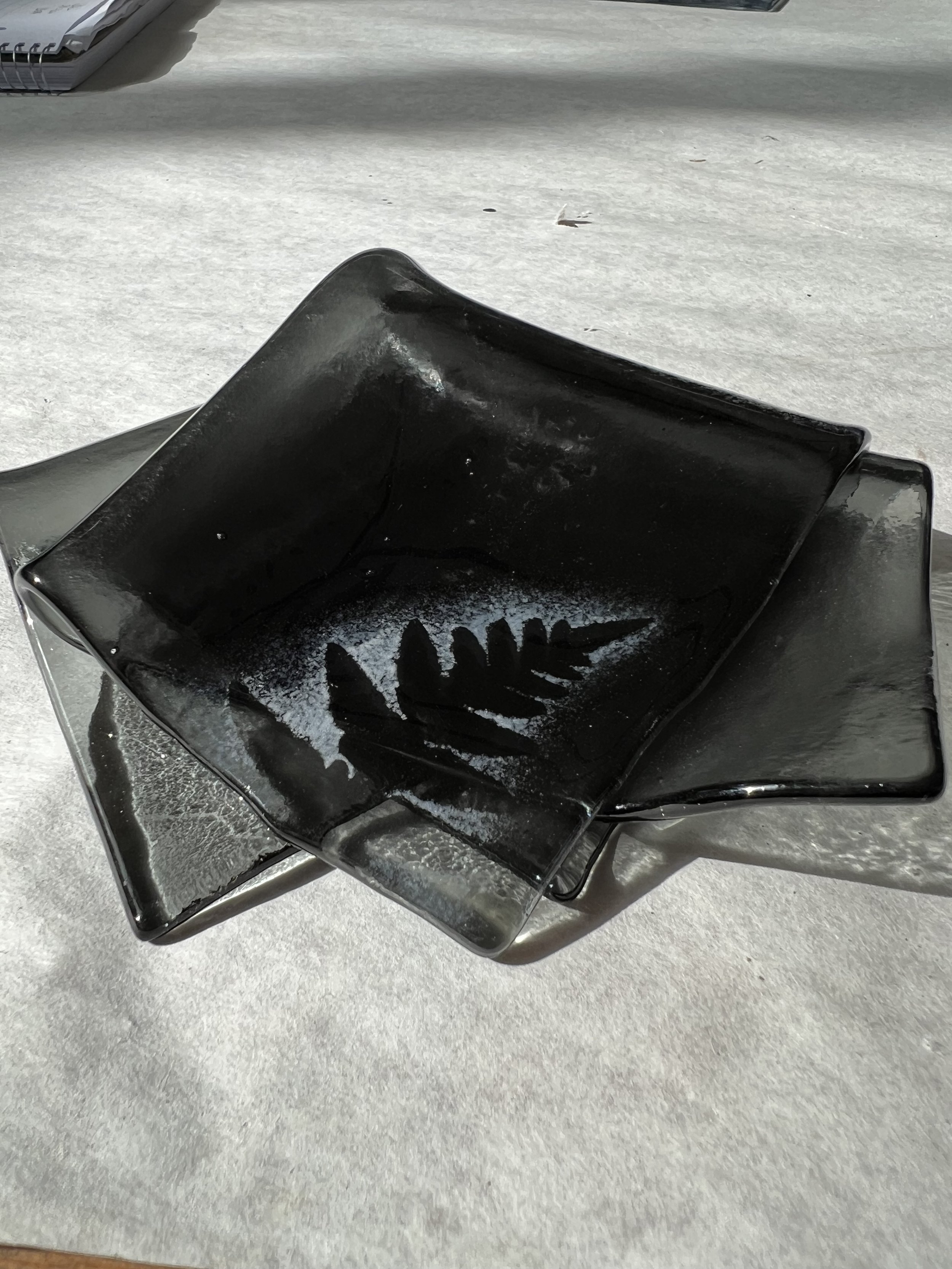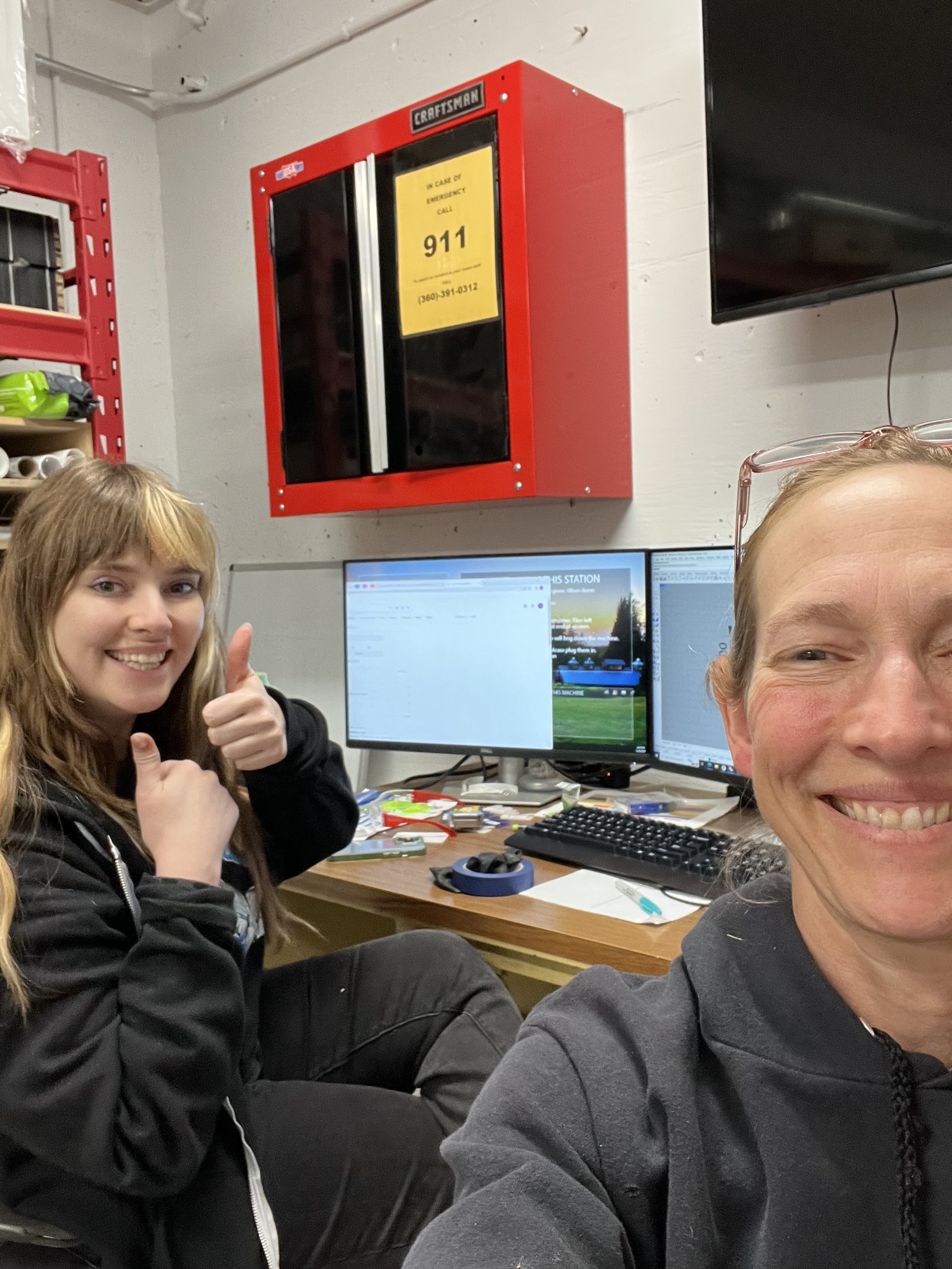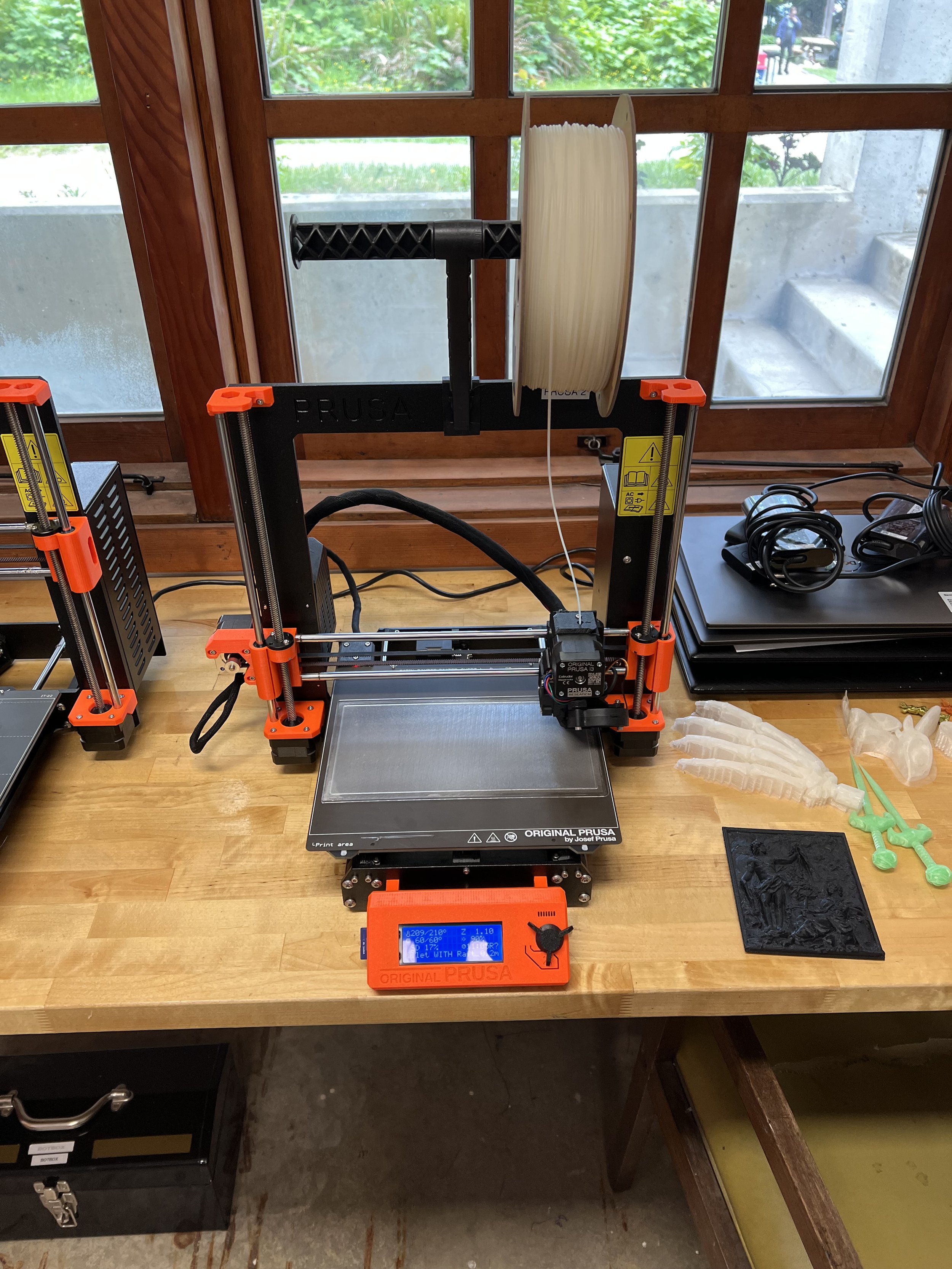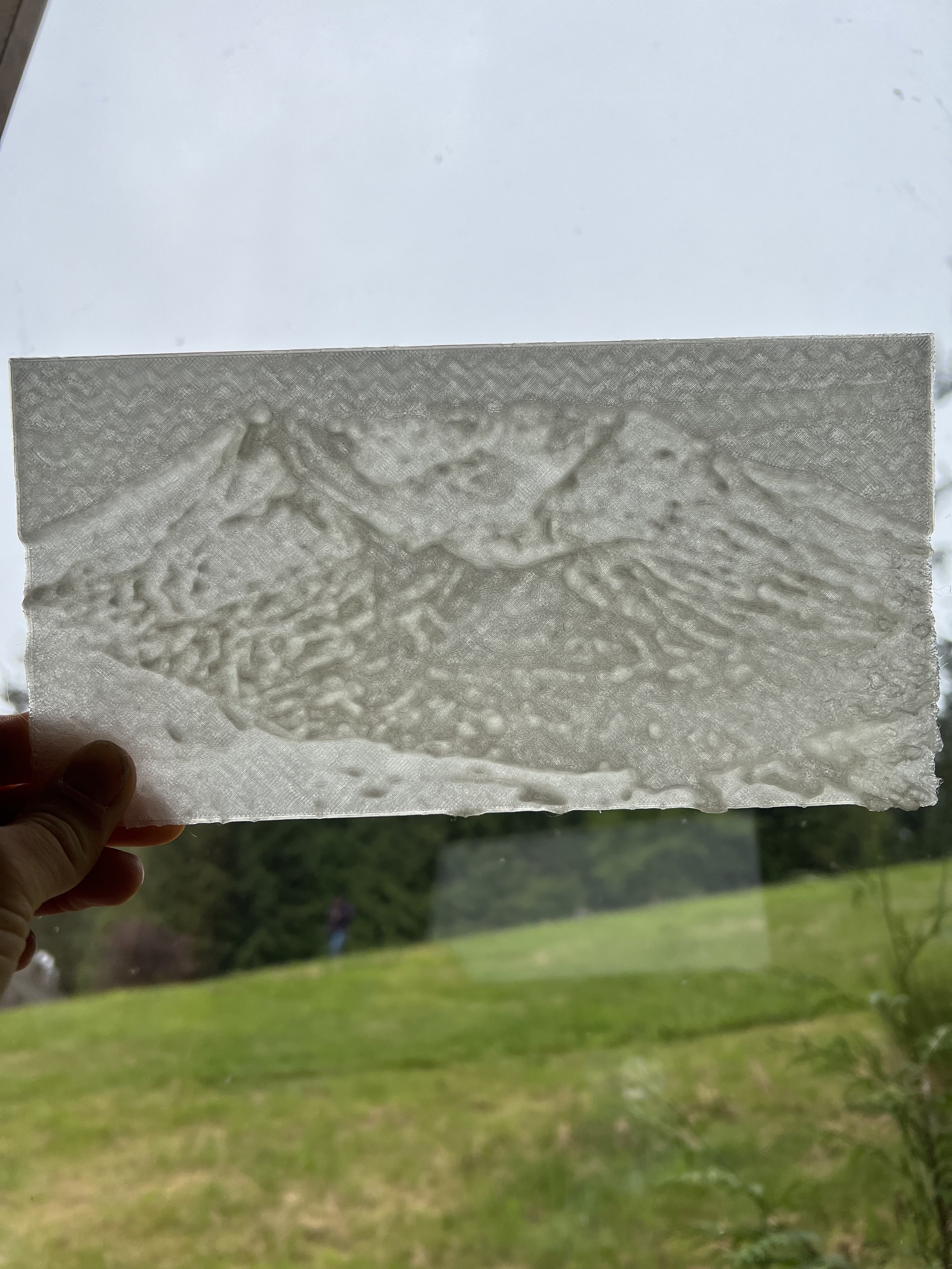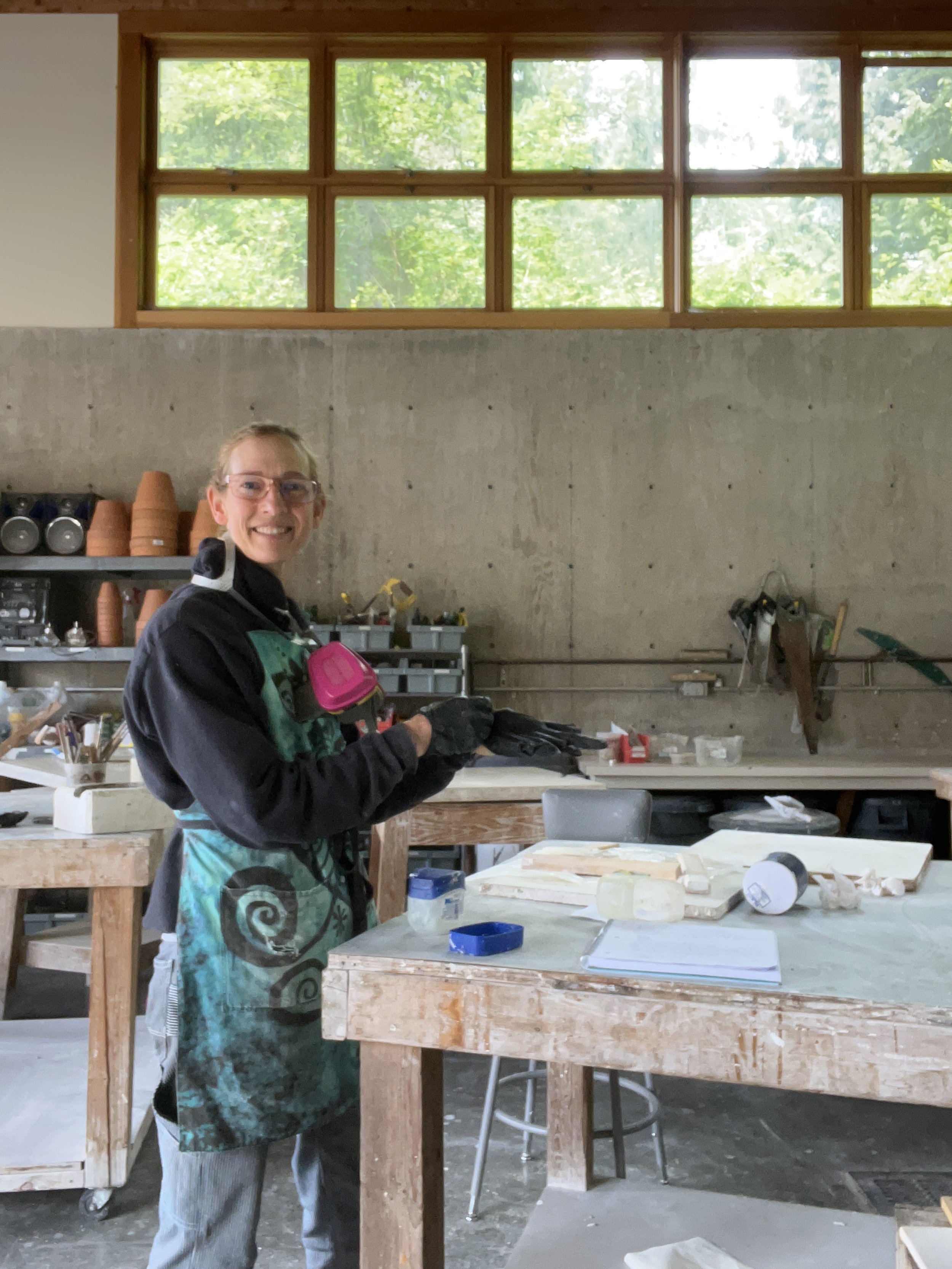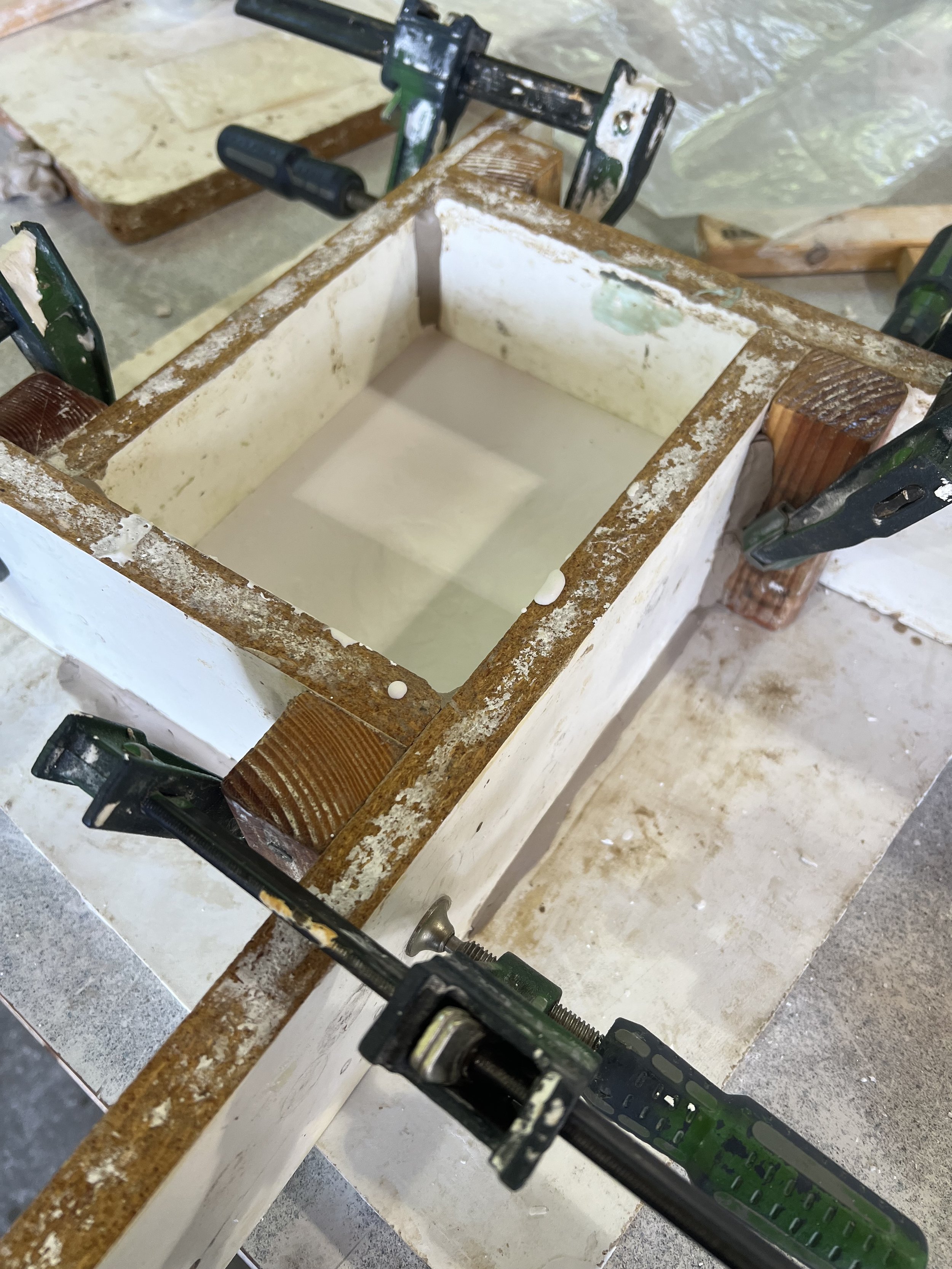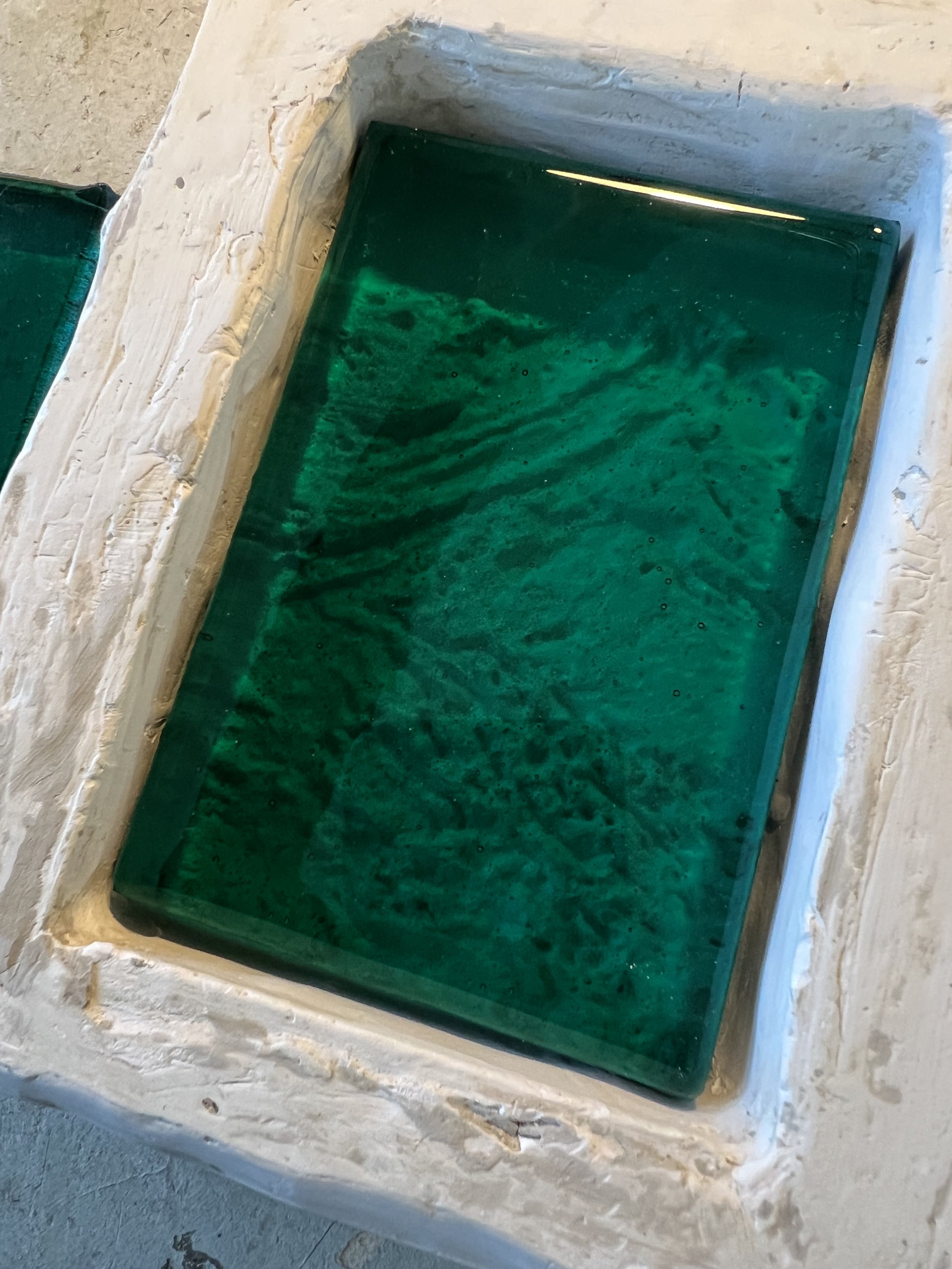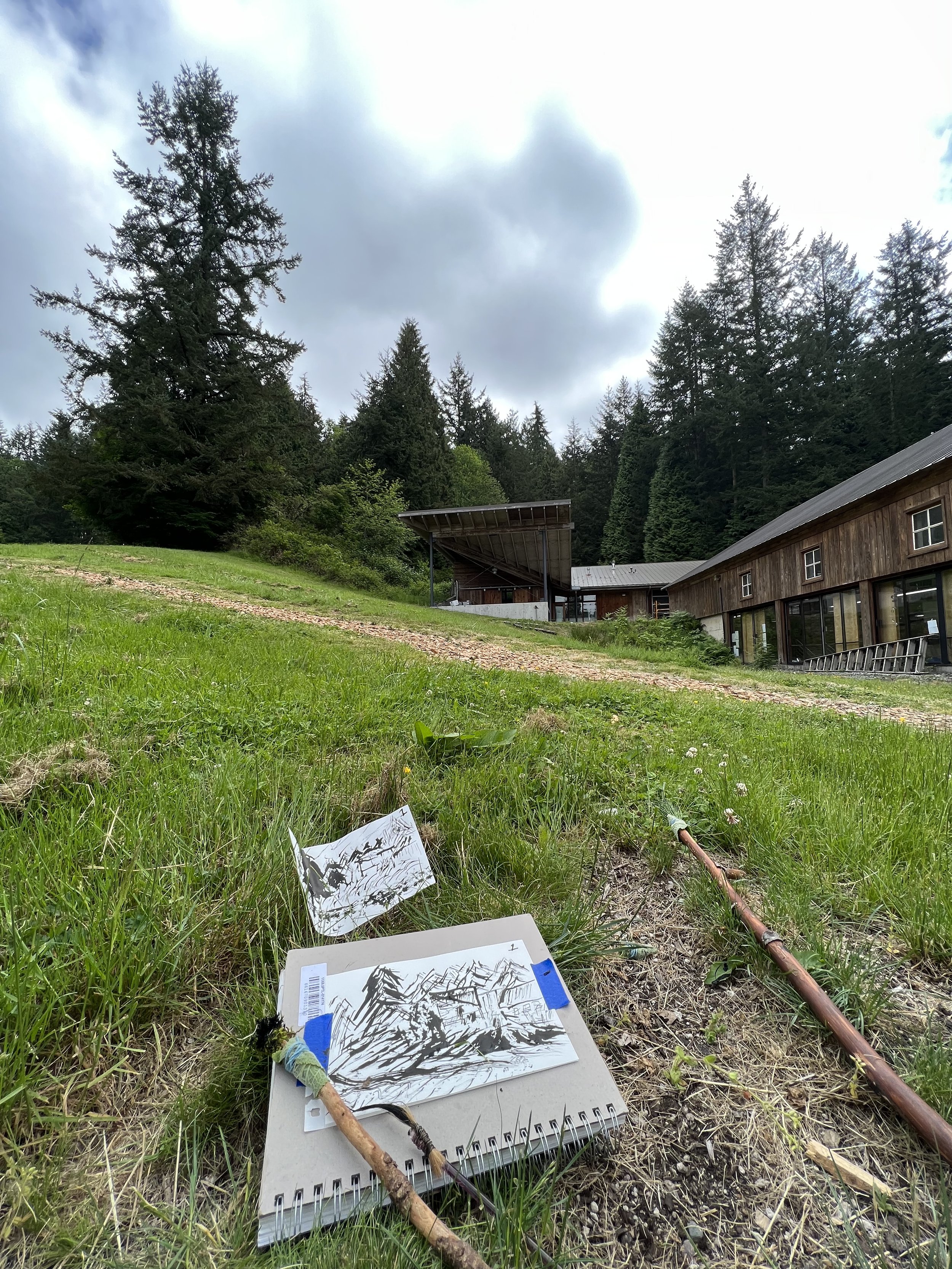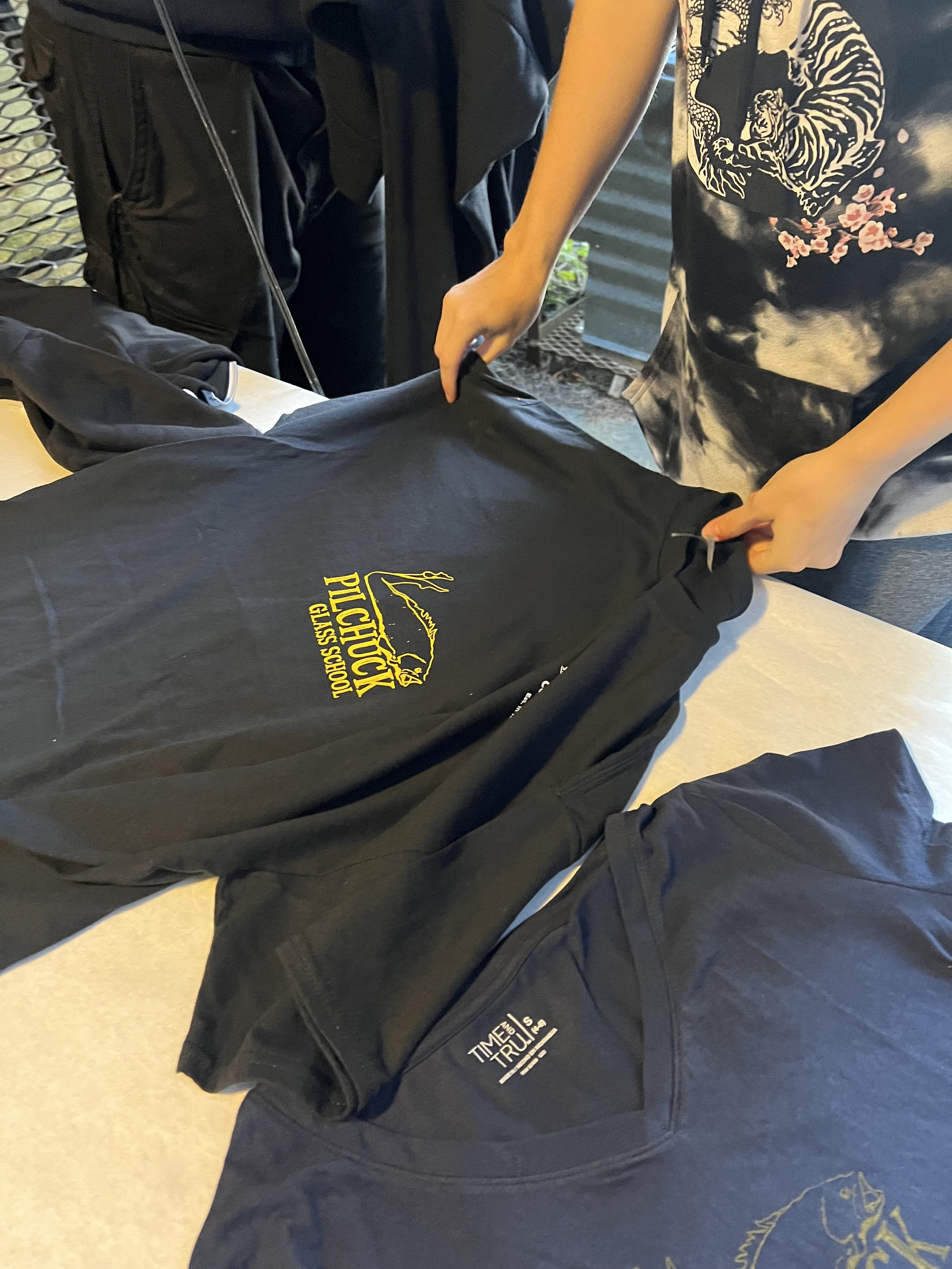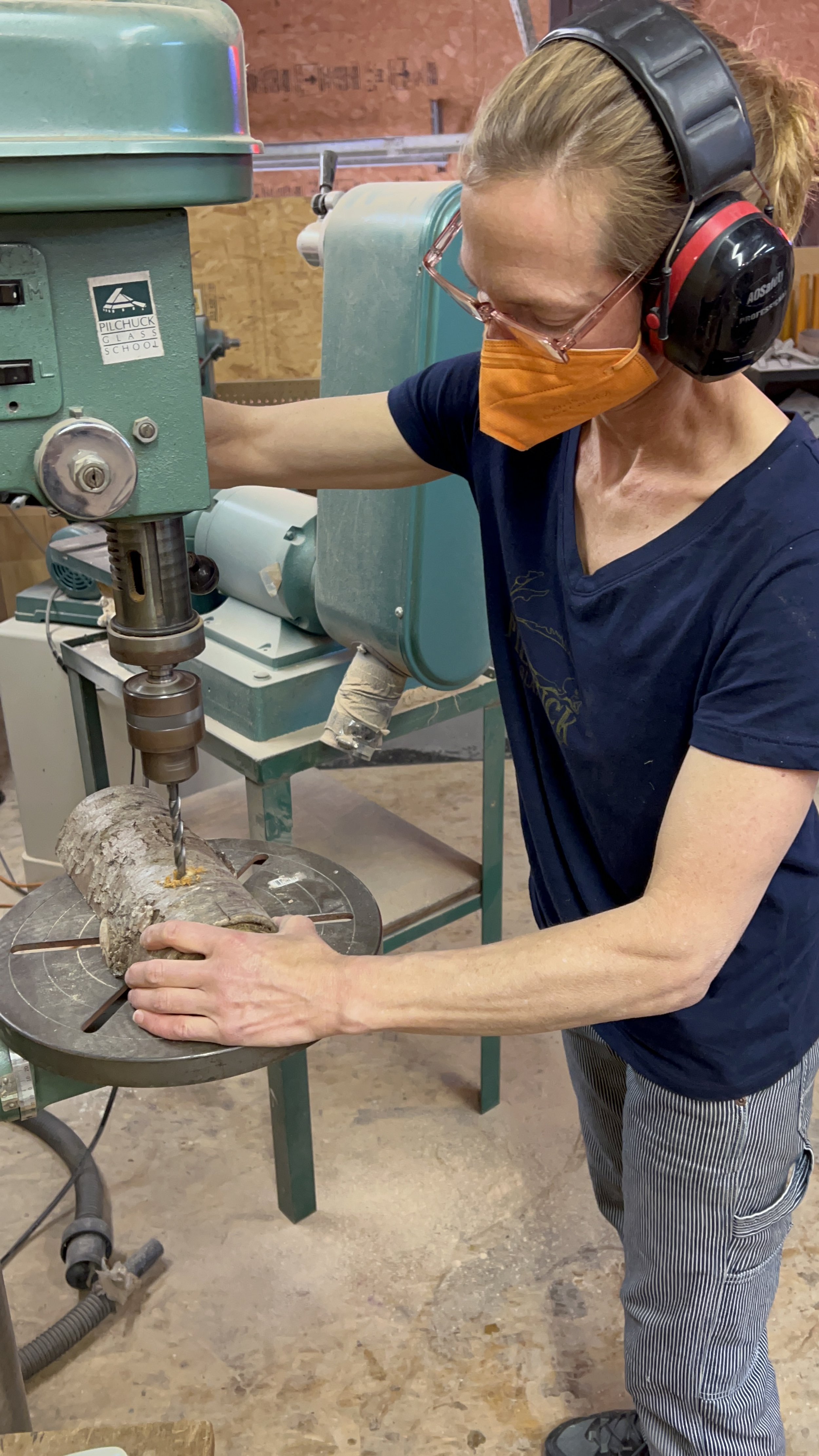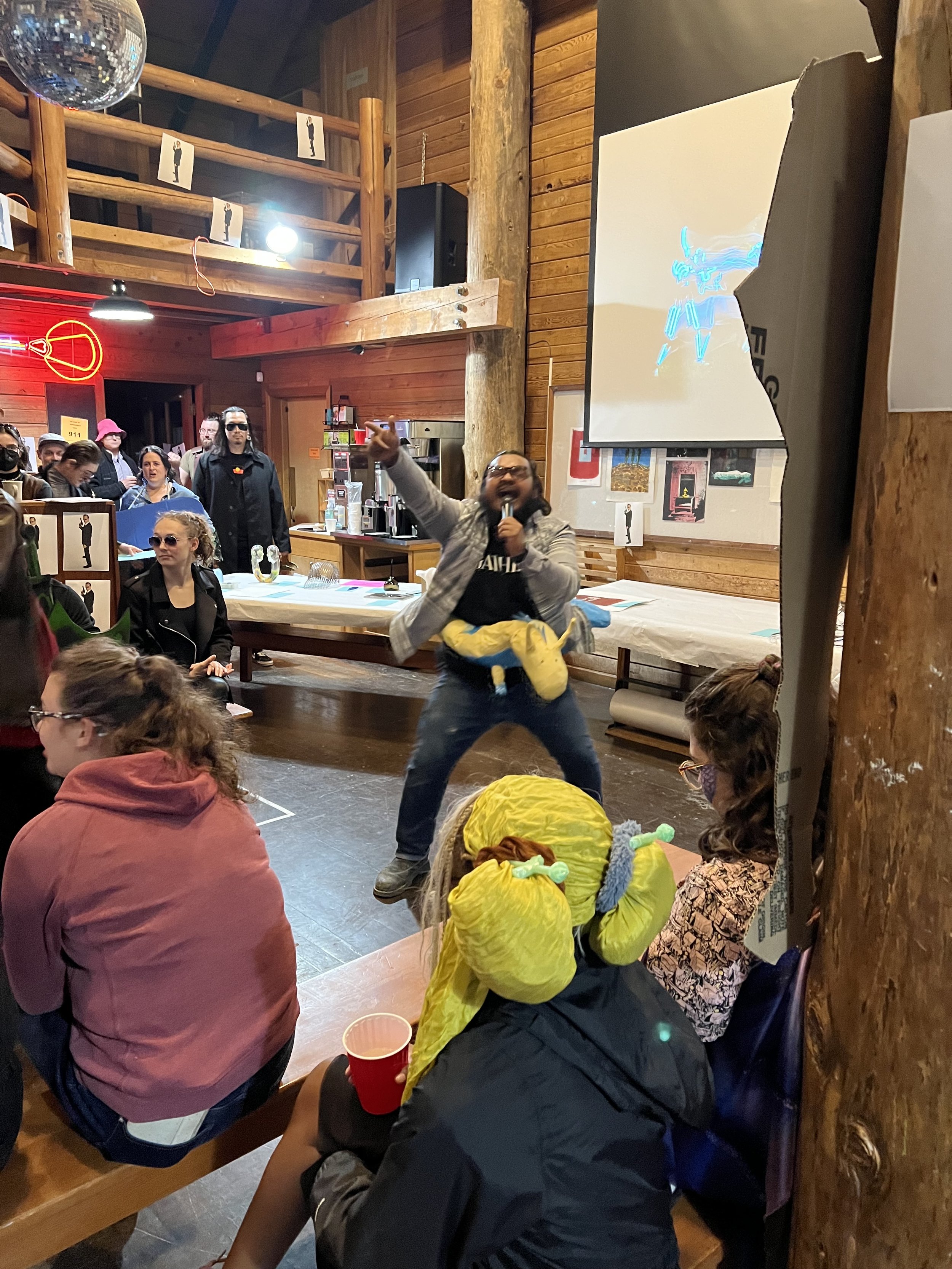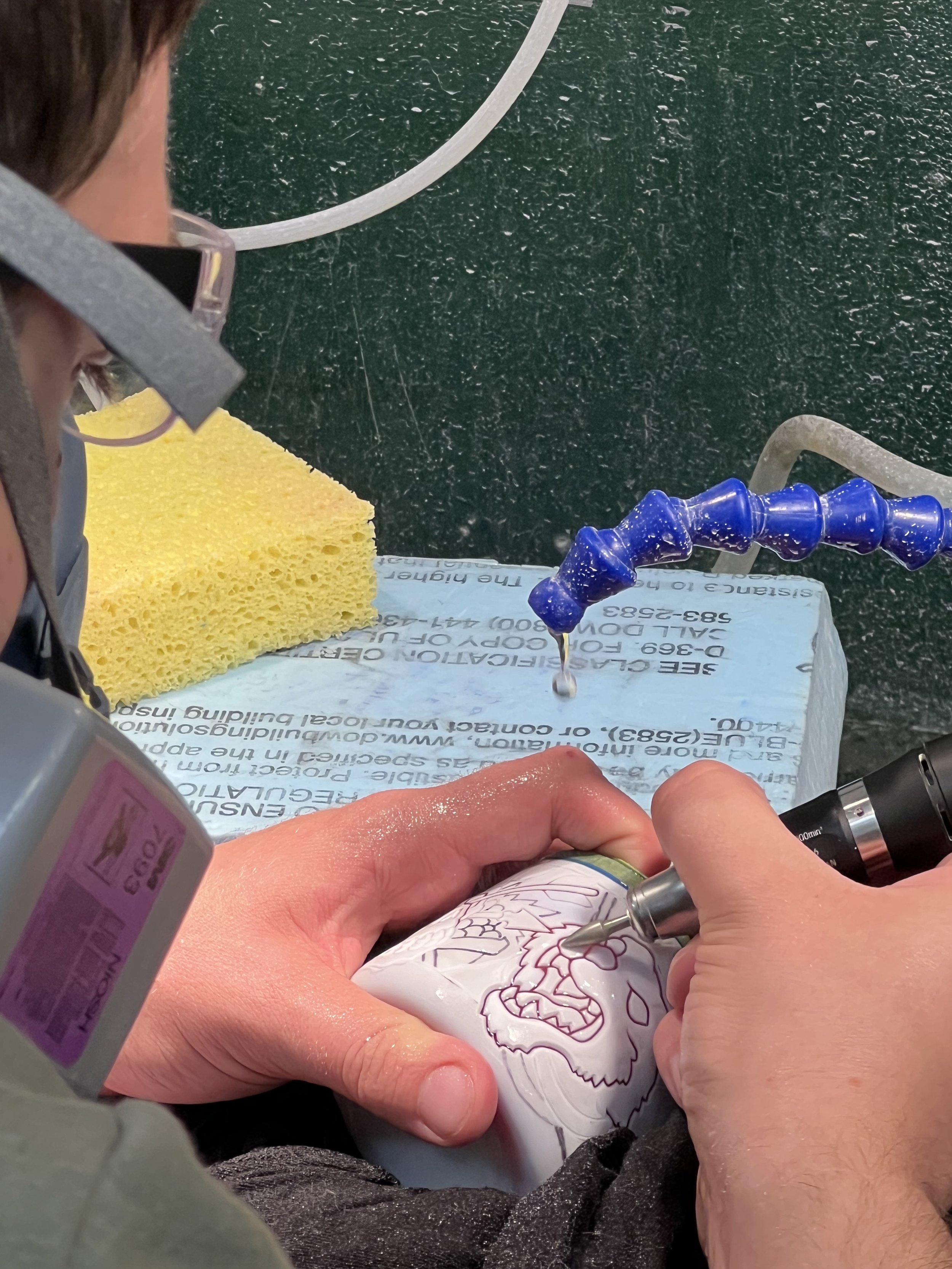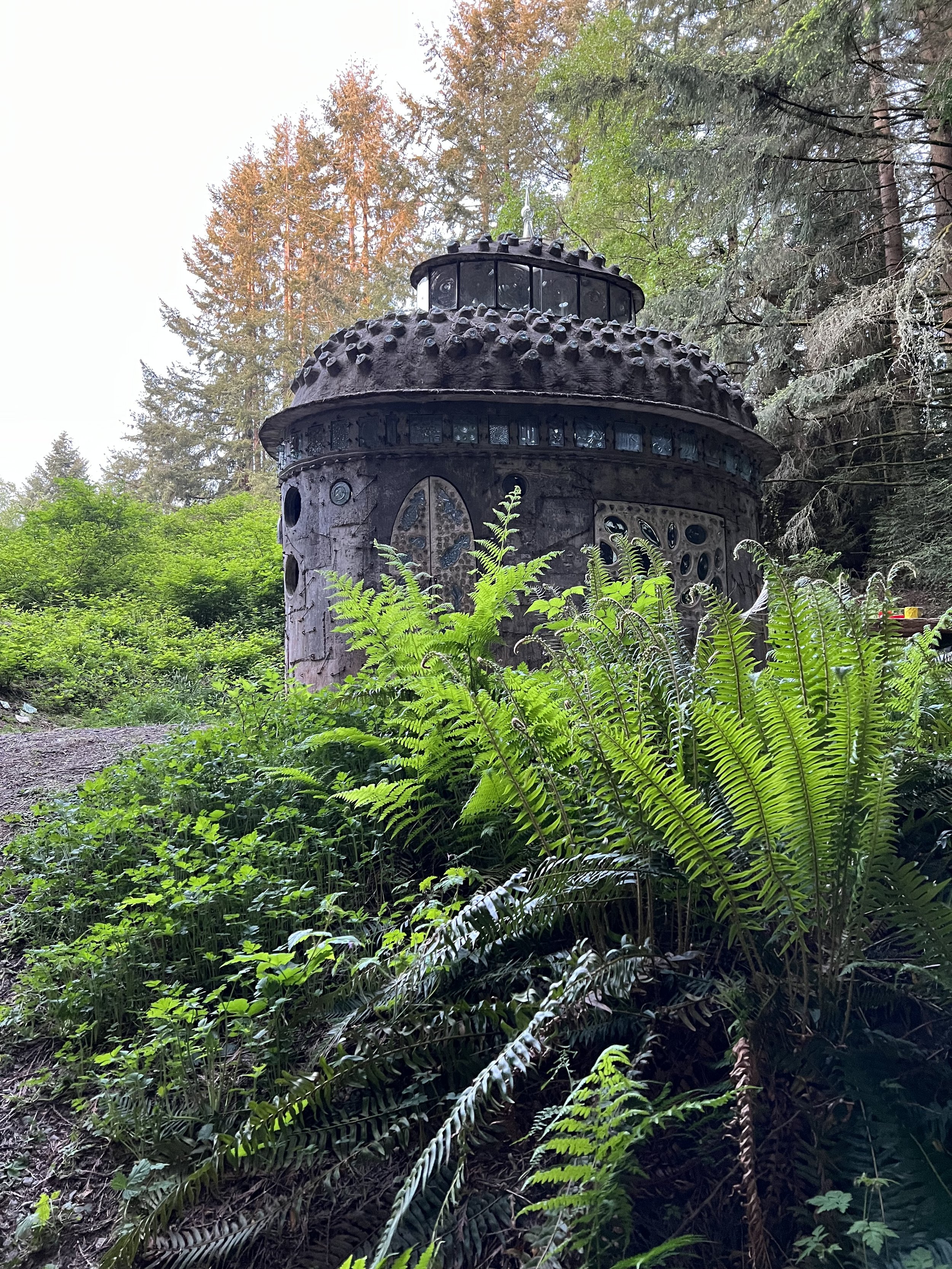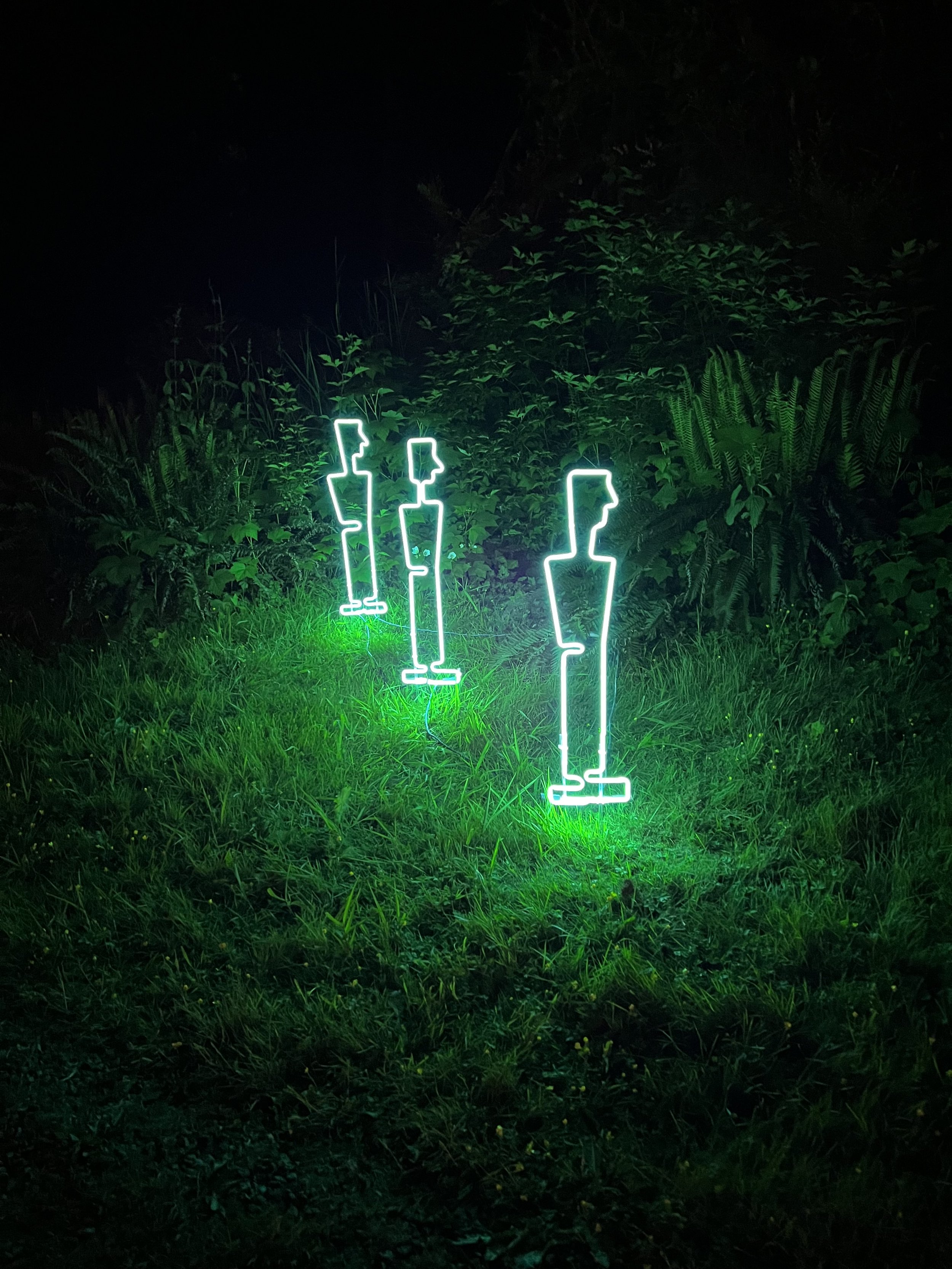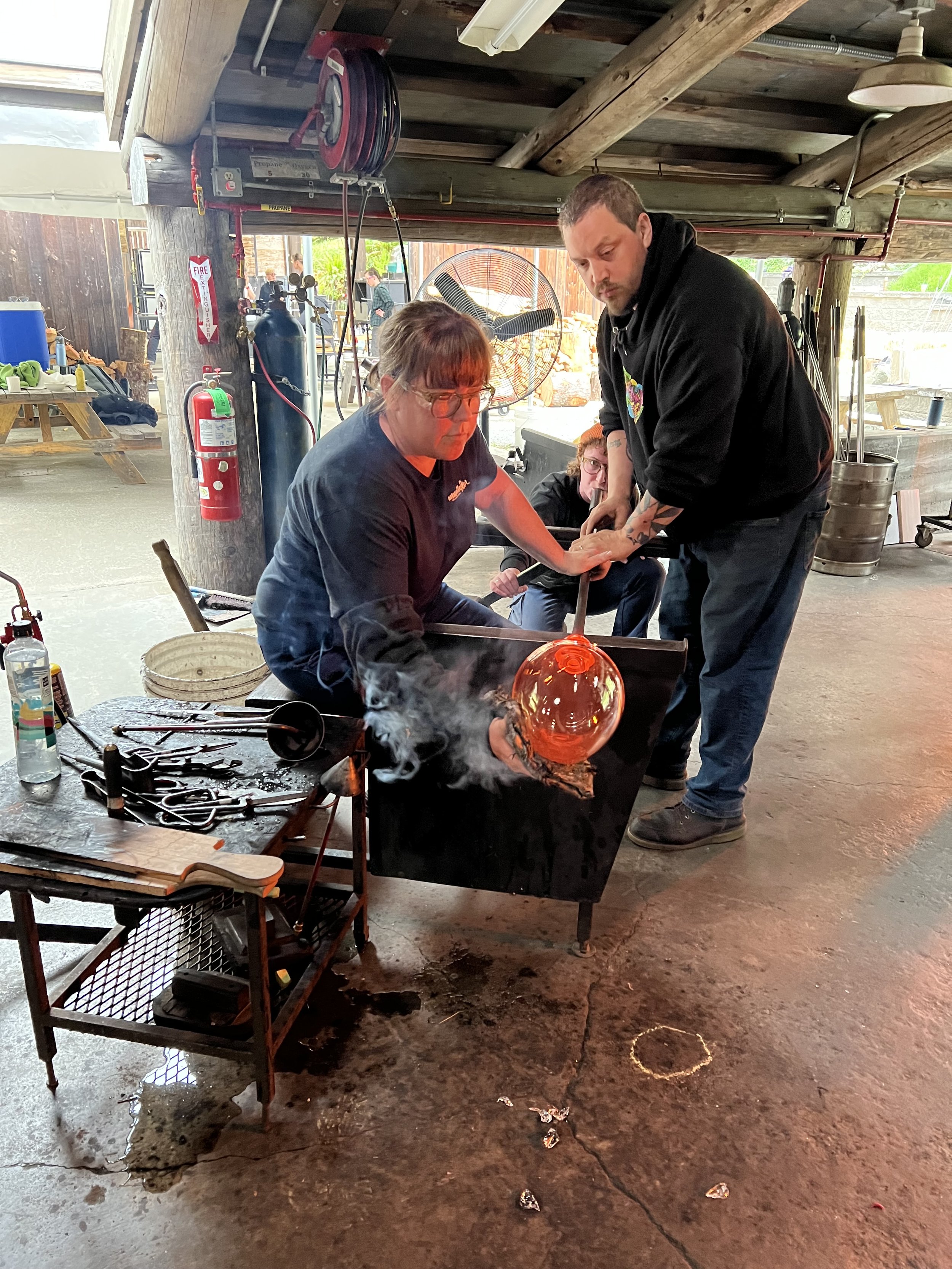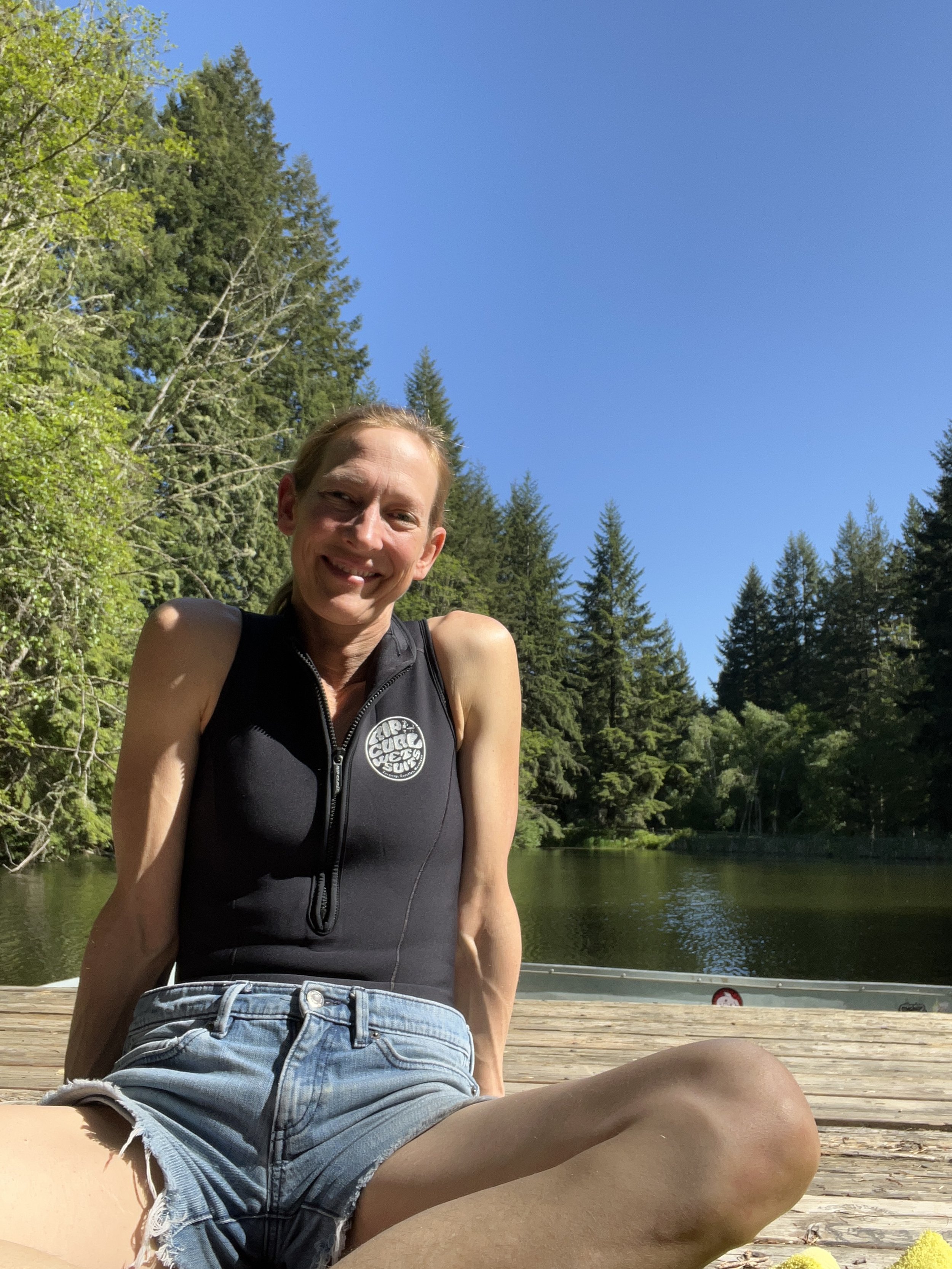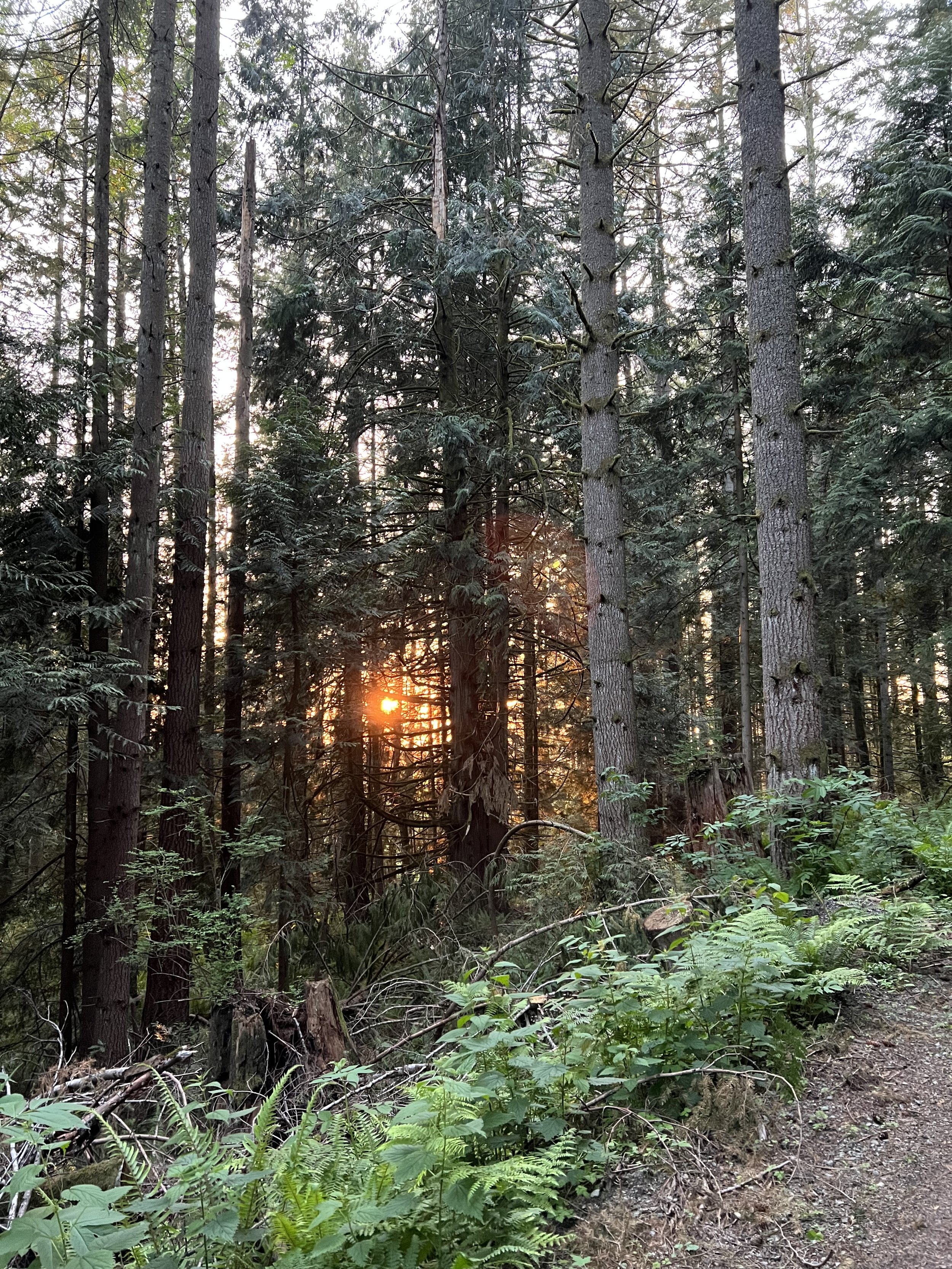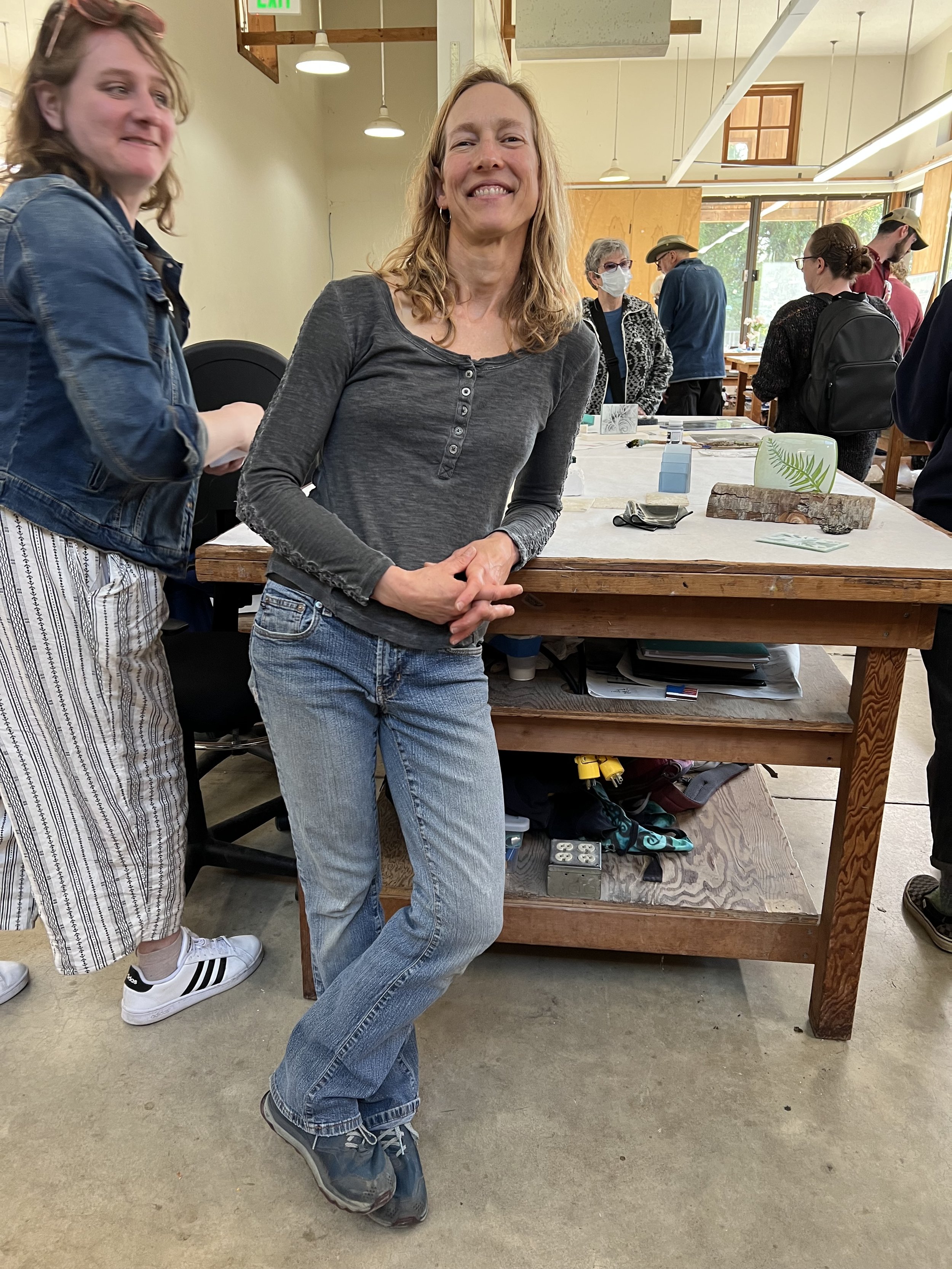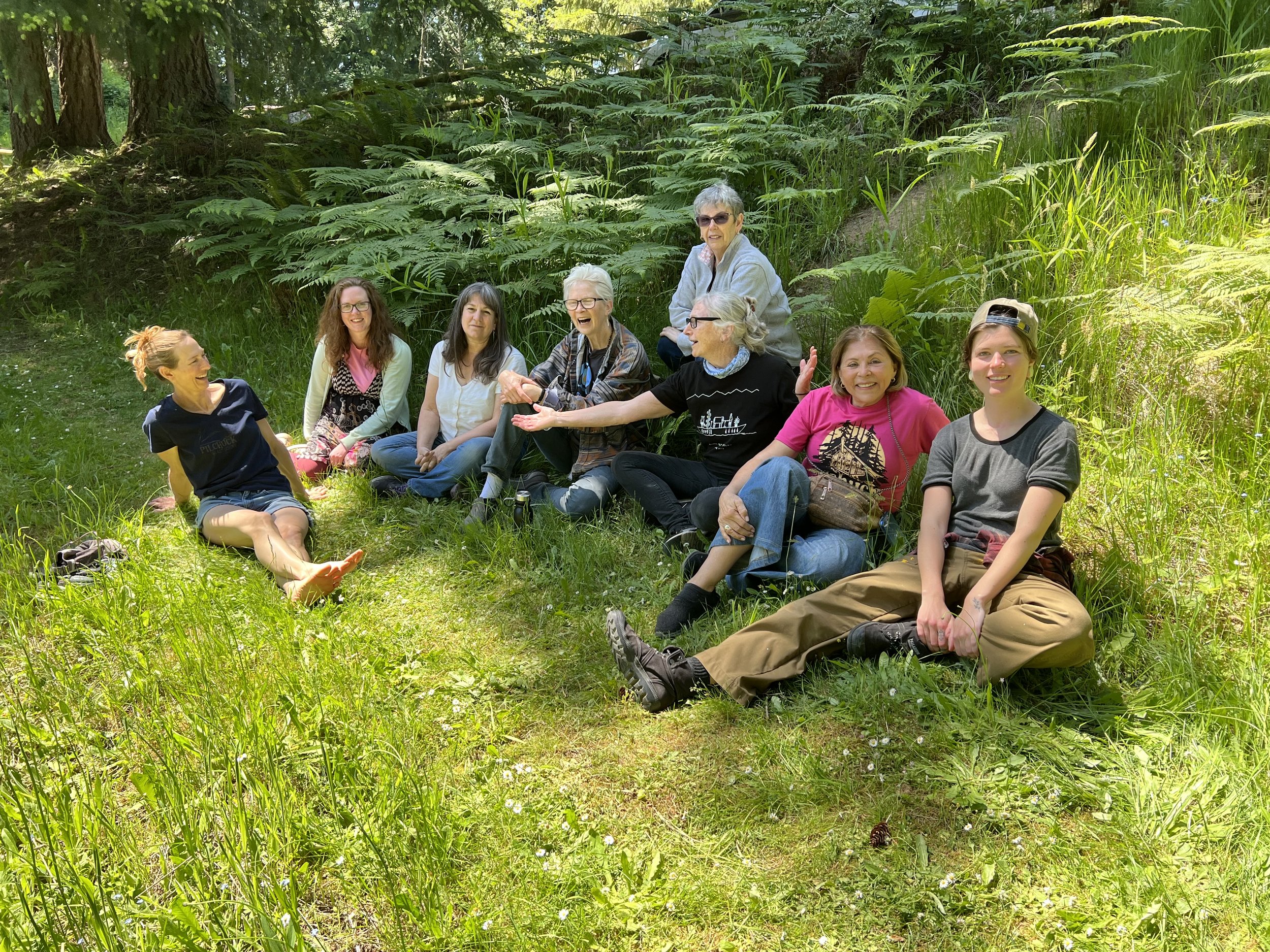Pilchuck Glass School
My summer kicked off with a 10 day session at Pilchuck Glass School for a course in kiln formed glass with Australian artist Kirstie Rea. I had been dreaming about attending Pilchuck for several years so this was a really exciting thing for me!
Kiln forming encompasses a huge range of methods that all rely on a kiln to heat and transform the shape or qualities of glass. The title of the Pilchuck session was Environmental. The focus of Kirstie’s work is describing feelings of being outside through representative shapes in glass; such as a wooden chair draped with what appears to be a wind blown glass towel. Her focus for our class was to really get us thinking less about the material of glass and more about what we have to say through our art.
I would like to thank Pilchuck Glass School, American Glass Guild and Stained Glass Association of America for awarding me scholarships which made my attendance possible. And to all the people who donate and support the auctions that fund scholarships, Thank you!
The name Pilchuck means red river in the native local language and refers to the Pilchuck River nearby. Pilchuck Glass School is located on the ceded territories of the Treaty of Point Elliott Tribes, which includes the Duwamish, Suquamish, Snoqualmie, Snohomish, Lummi, Skagit, and Swinomish Tribes. The region has long been a center for Indigenous people to gather, fish, trade, and maintain tribal relationships, which continues to this day.
Stepping onto the Pilchuck campus was at once liberating and paralyzing. This summer camp come art school is a great place for exploration and also a place to be totally overwhelmed by possibilities. Founded by famous glass blower Dale Chihuly in 1971, the vibes are kind of like- let's isolate a bunch of creative people together in the forest with a variety of tools and see what kind of cool stuff they create. An open air hot shop nestled onto the hillside is surrounded by complimentary studios- cold working, printing, wood and metal shops, a "bot lab" for design, 3D printing, and water jet printing, a library, and obligatory quad with hoola hoops and juggling pins.
My art has been primarily illustrative and realistic. I have represented objects that I know well and love to see and feel- mountains and seaweed for instance. I love to create moments of wild things and places that can take you on a little brain vacation when viewing. Modern art tastes have become quite abstract and as such, representational art is sometimes looked down upon in favor of conceptual art. I was faced with some serious inner turmoil of this reaction to my work and found myself in a bit of a struggle to stand my ground for what I love to create - not against anyone else, but to myself!
Our course began with simply observing our environment through a clear sheet of glass using its transparent and reflective qualities to create images. In the print shop we learned the process of using a 1/4” glass plate as a template for laser printing our image onto (in reverse) and then inking that plate and creating paper prints from it. Back in our own studio, we moved on to fusing images with powdered frit (glass granules) onto sheets of glass, stacking them and fusing them again into different shapes. We also experimented with fusing various staircase shapes which required creating the upside-down construction of a staircase in kiln cloth to support the glass as it melted into the desired shape.
I was interested in using the multiple layers of glass fused together as a medium for engraving away the layers to reveal colors below. I fell in love with cold working!
“Cold working” refers to any manipulation of the glass surface in its solid state, in other words- working with glass while it’s cold, vs. blowing glass or putting it in a kiln. The cold shop houses multiple sandblasters with varying grit sizes, belt sanders, lapidary grinding wheels, and other cutting, grinding and polishing tools and carving/engraving lathes. It also is a place where adhesives and epoxies (some UV activated) can be used to connect multiple pieces of glass. The cold shop turned out to be my favorite spot. Sure, it is usually noisy and gritty with all the grinding but something about putting on rubber boots and sparkling aprons took me back to my days living in Grundens slickers while crawling around in the tidepools for marine research. I brought the blocks of glass I had fused together into the shop to engrave details and imagery.
Our class turned out to be quite open ended so once I had completed a few initial projects, I made my way around the different studios to get a taste of what the campus had to offer. Each studio has a manager and they are there to help students learn to use the equipment.
The concept of 3D printing and glass work was new to me, so while I had the help of a tech assistant and full lab at my disposal I translated a photograph of Mt. Saint Helens into a 3D plastic model. The studio tech from ceramics then taught me how to make a clay/plaster mold from which pop out the 3D print, leaving a gap that I will fill with glass in the kiln and cast the image into a glass sculpture. The annealing (cooling) time for thick slabs of glass can go for days, so I'll have to fire this one at home.
The hot shop is the center of campus activity, but Pilchuck isn’t just about hot glass. It’s really a place to explore art in every way possible. Our class did exercises with drawing using found materials around campus. We made paint brushes out of natural and found materials and using India ink we created landscapes and studied the use of space on a canvas. We took walks and talked about representing the environment in art. There were after dinner presentations by all of the instructors, TAs, gaffers, resident and visiting artists. There were parties, demos, screen printing and field trips. I took quiet swims in the pond long walks in the woods.
This was an intense experience with it's ups and downs. With concurrent courses in neon bending, hand built furnaces, blown glass and engraving there were a million distractions. With so many activities it felt like there was hardly any work time. I had high expectations of the skills I would learn and many, but not all were realized. What I did learn is to give myself more time to think about what story I want to tell through my art. There are infinite ways to translate emotions into my art and not all of them involve glass!
I thought I did have an open mind going in, but there certainly were expectations deep down. When some of those weren’t met I struggled. I fought against myself and found help from a campus councilor and classmates. Being an artist doesn’t just mean creating. It means exposing your inner self, your struggles and deepest feelings to the world and just letting them have their say about it. It means being ok with failure and rejection, repeatedly. It is a constant struggle for me to be ok with who I am and what I create and not feel lesser than anyone else and their creations. In a place as dynamic and fast pace as Pilchuck, with so many brilliant creative people, you just can't predict what will happen, who you will meet or what thing will catch your attention and change your direction. I learned so much more than just what I have shared here. The lessons will take a good long while to be absorbed.


